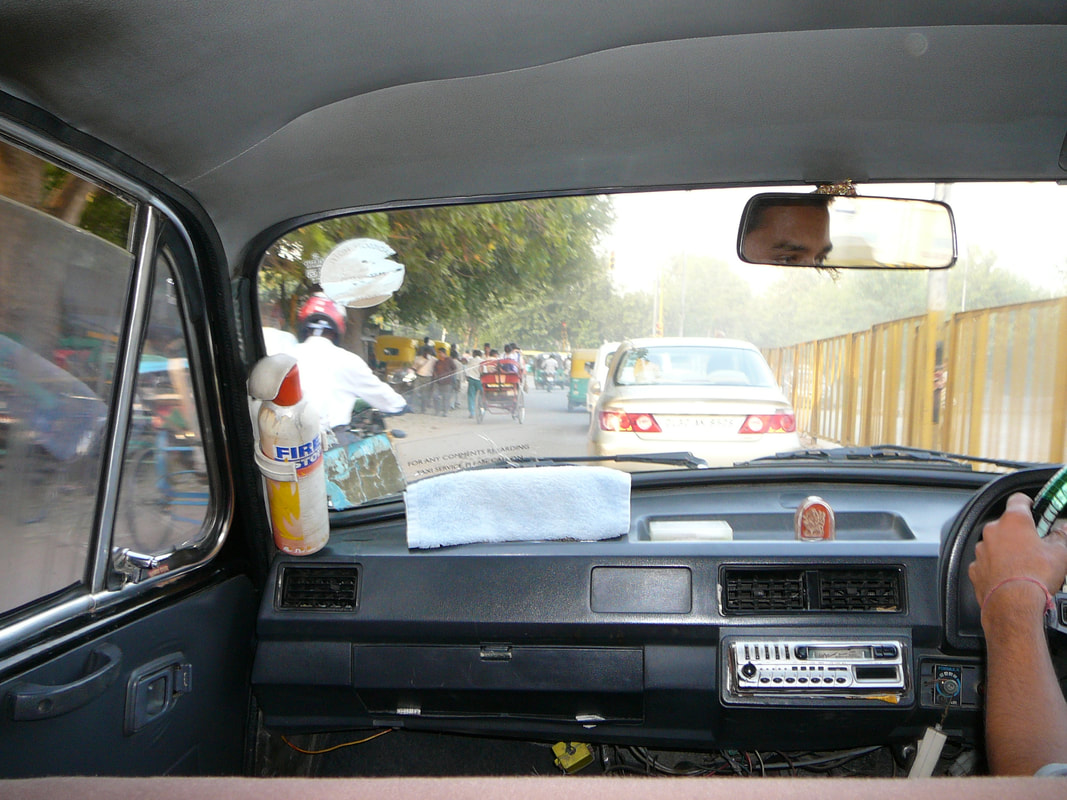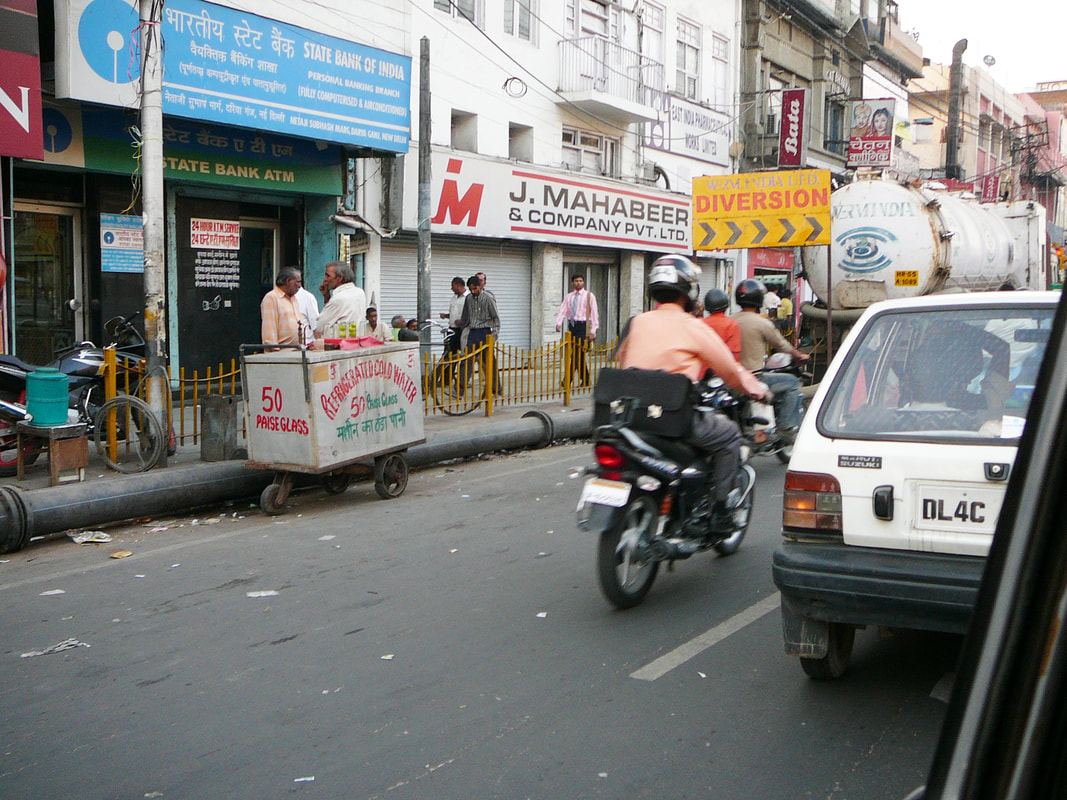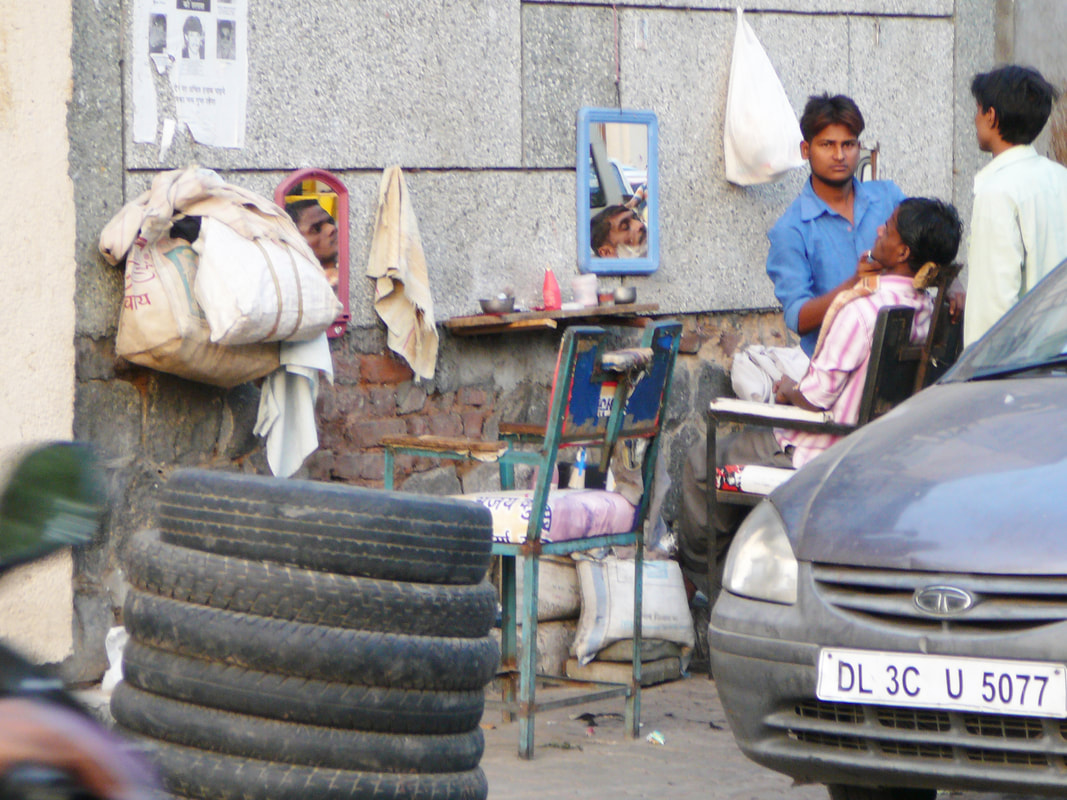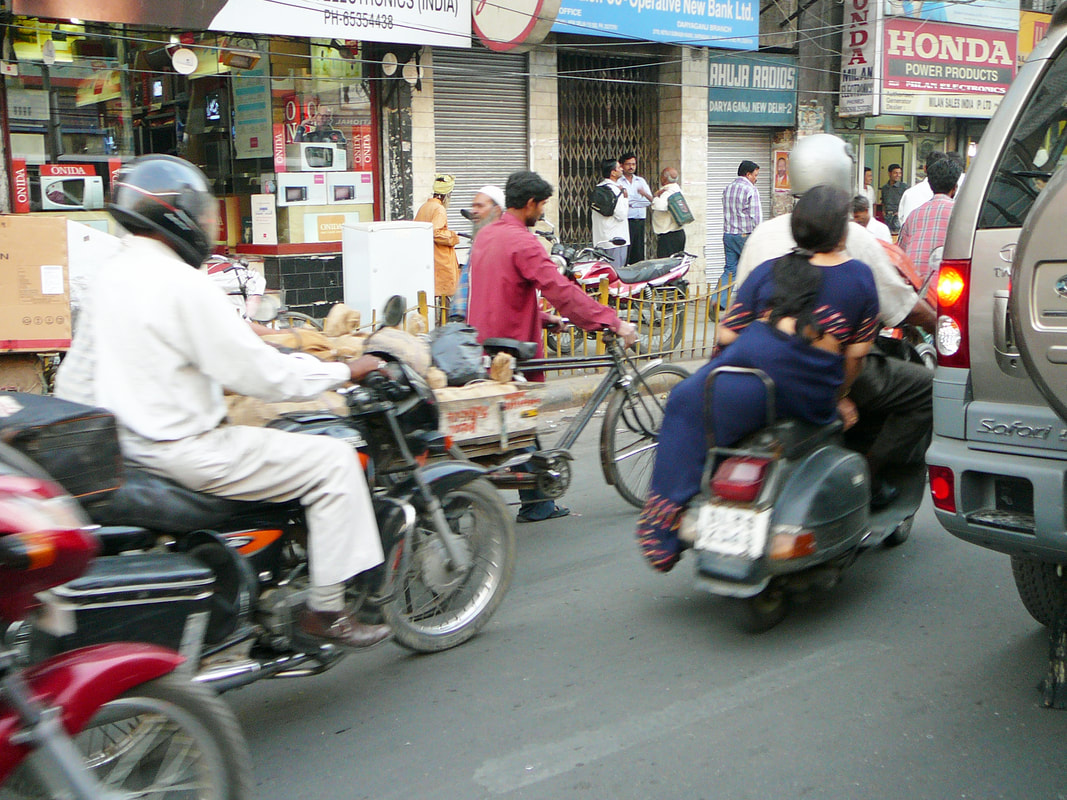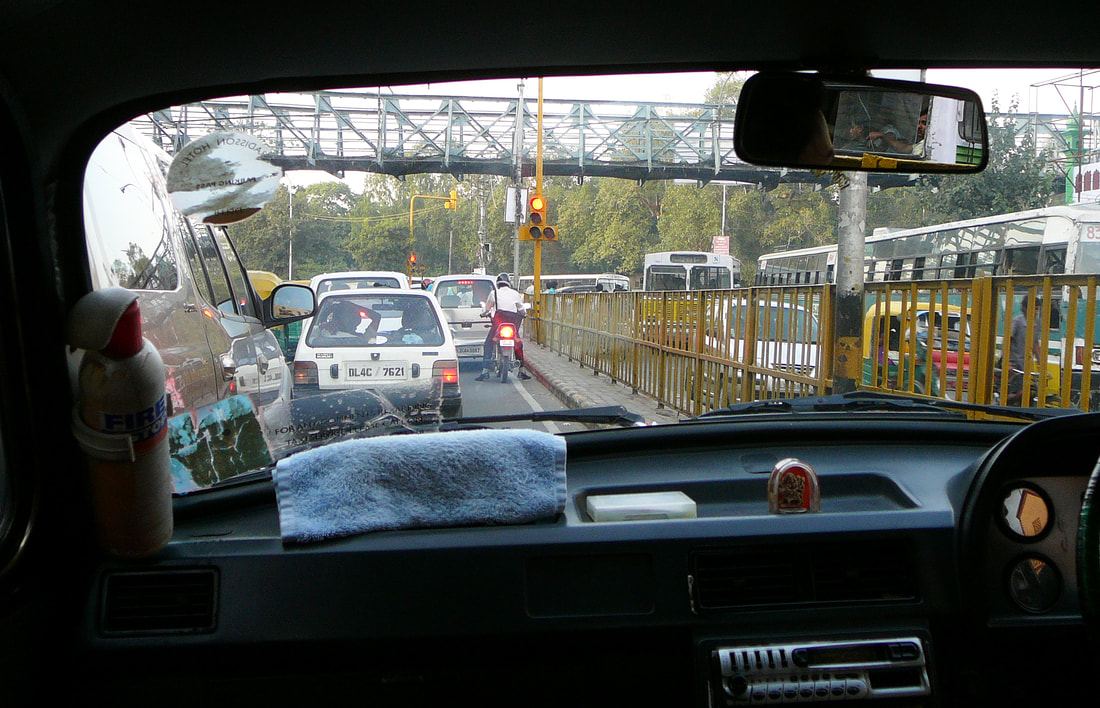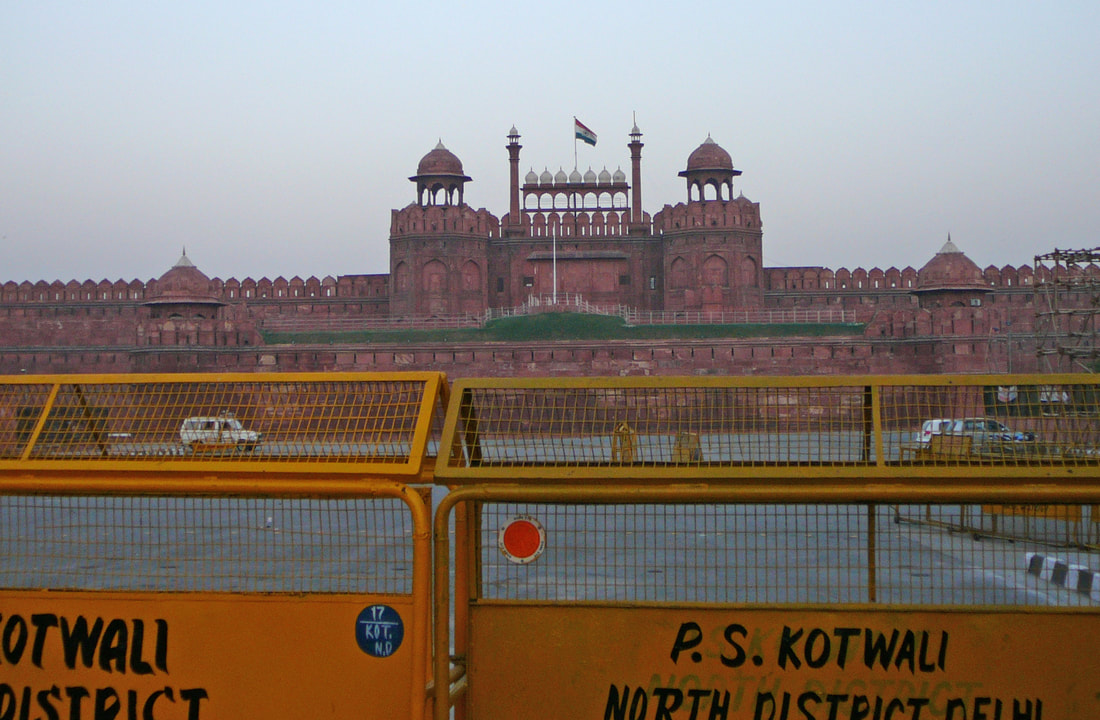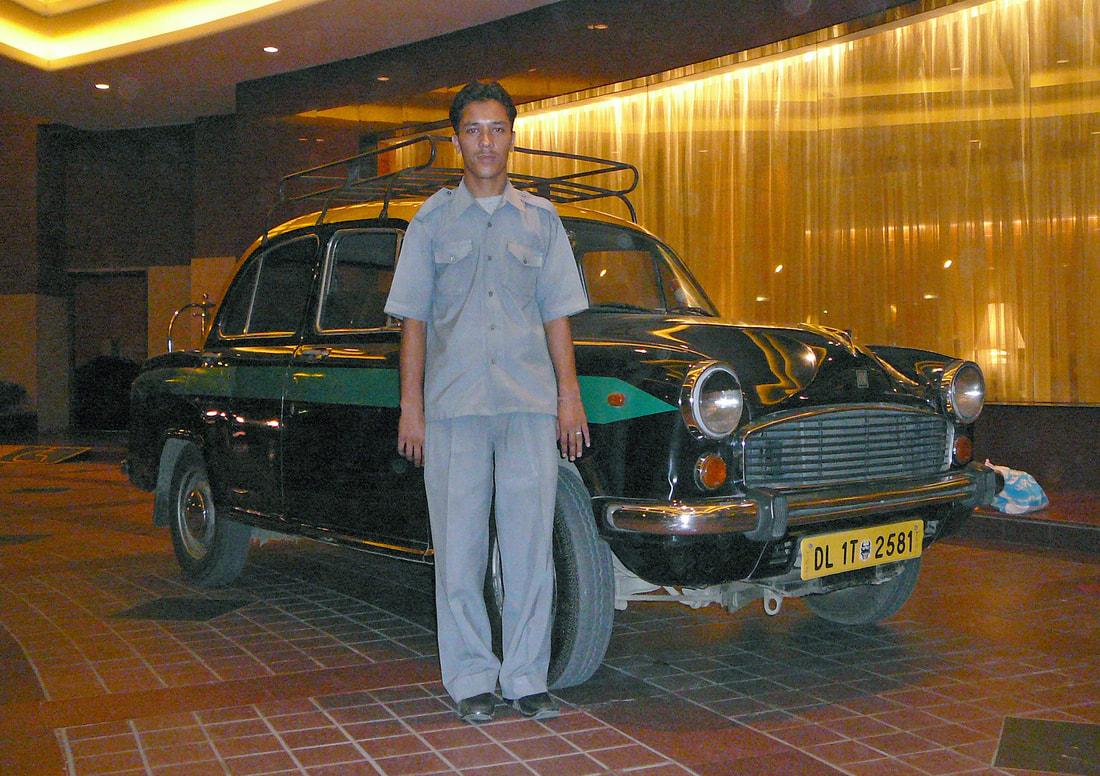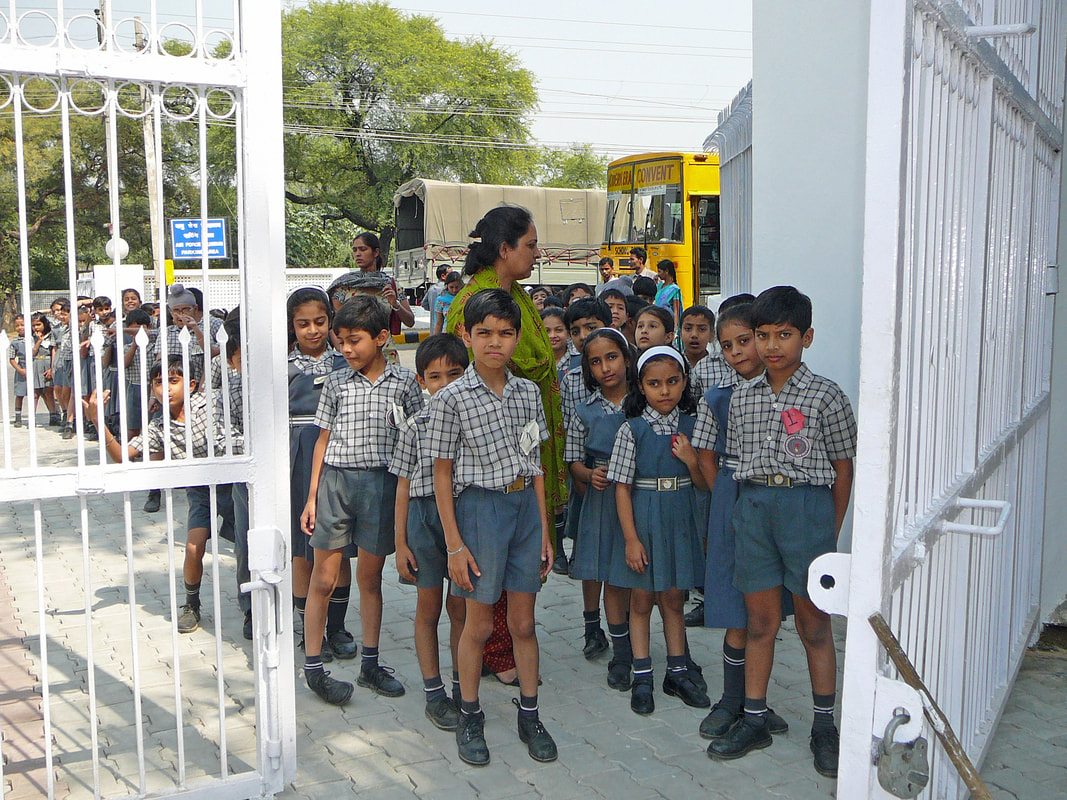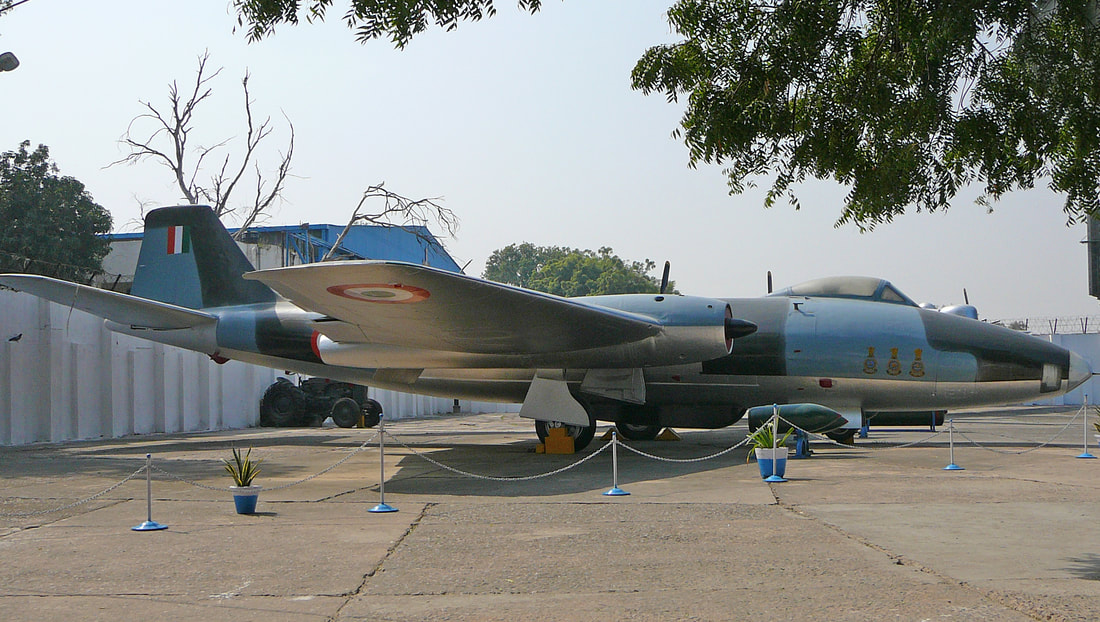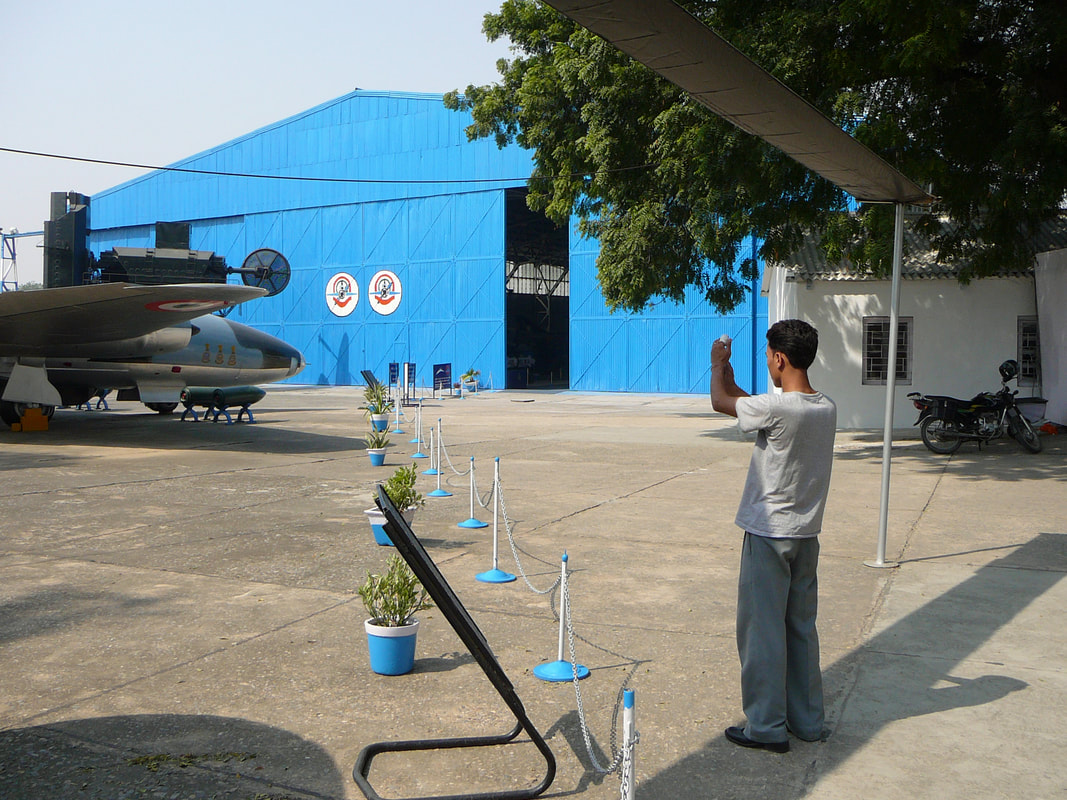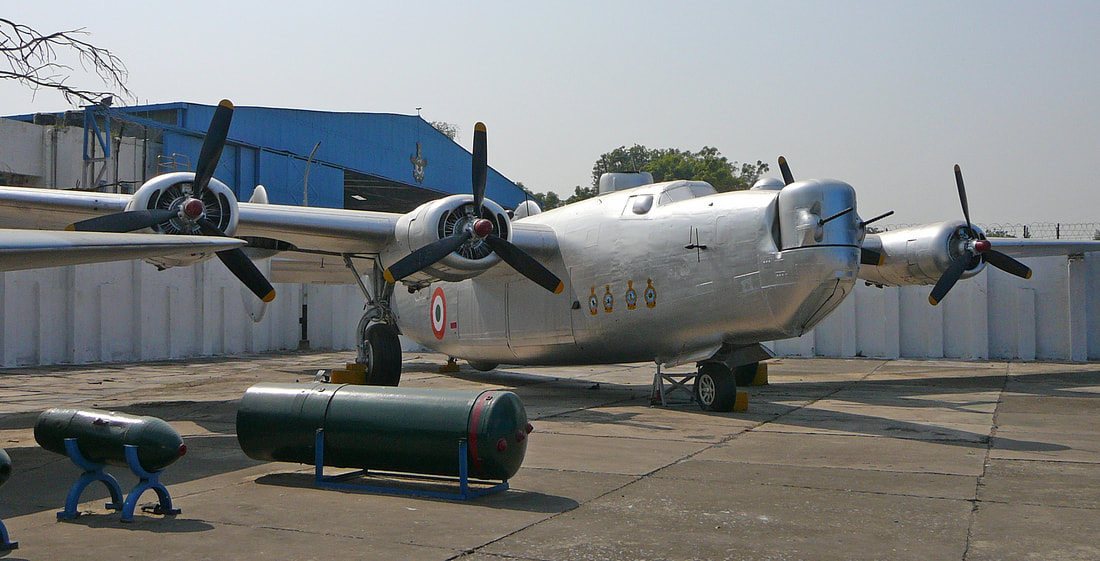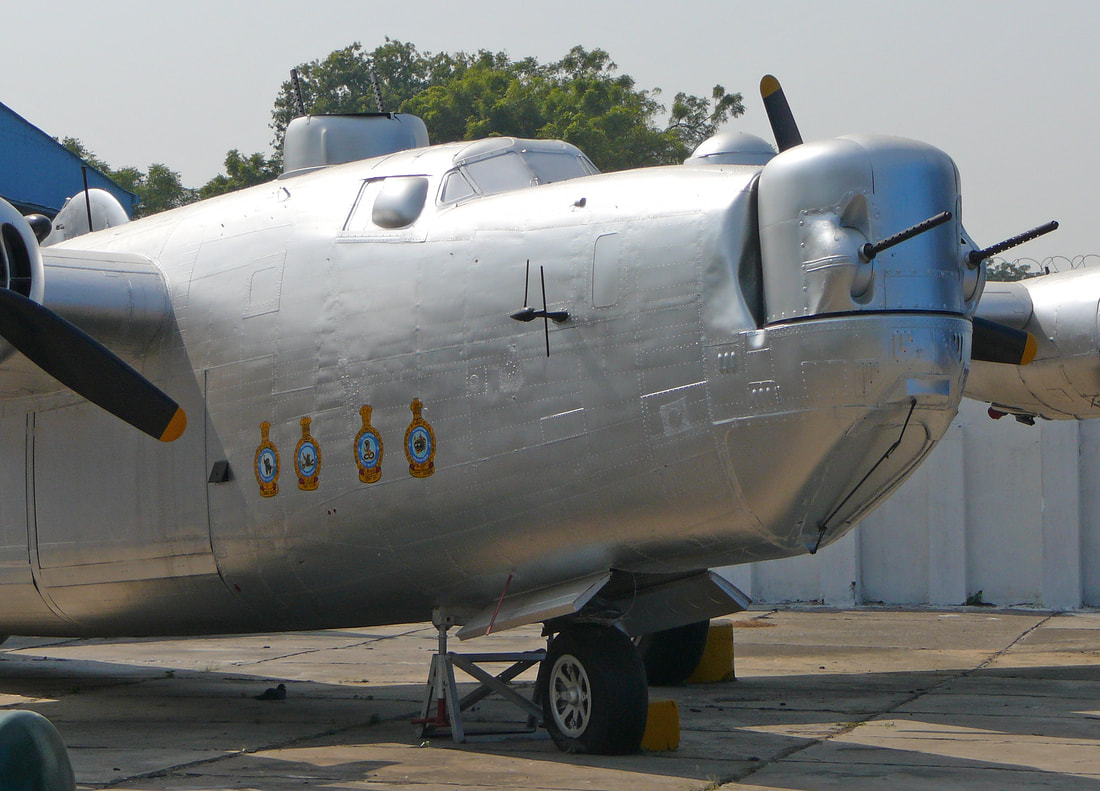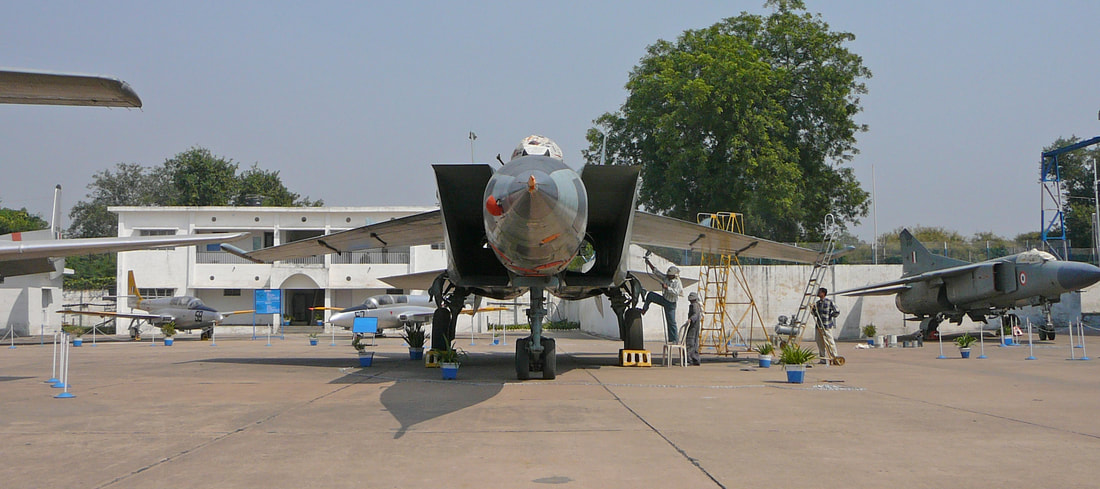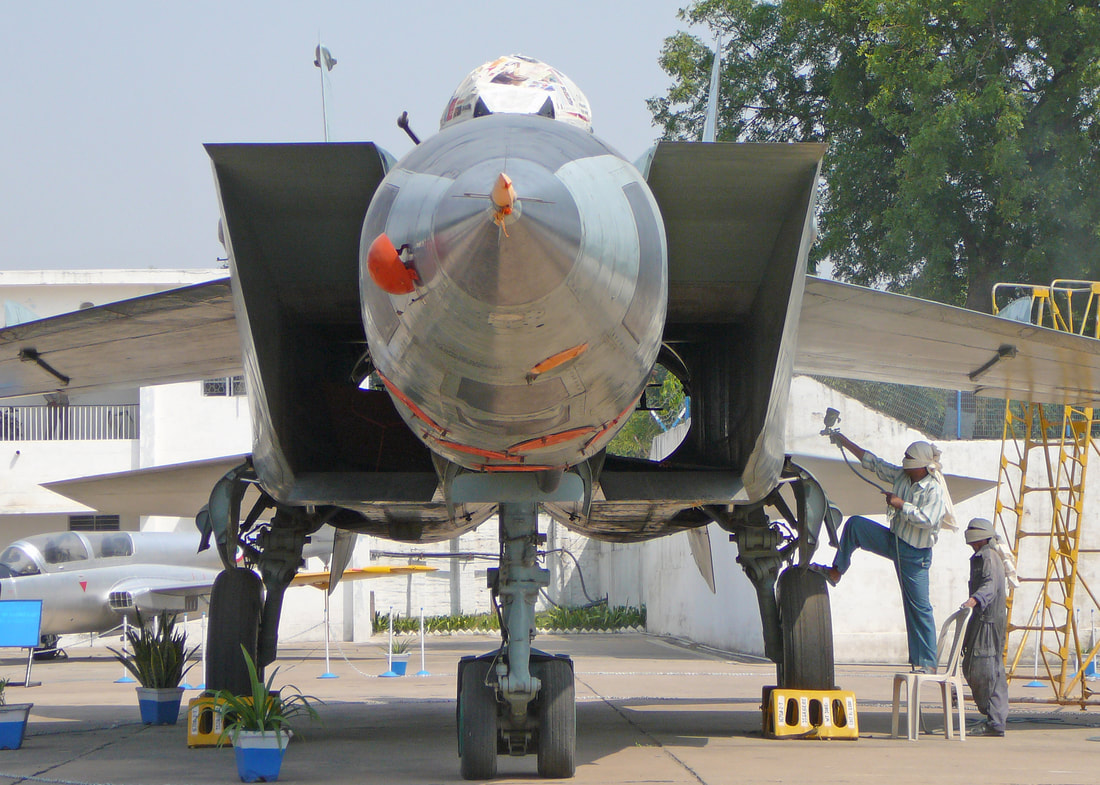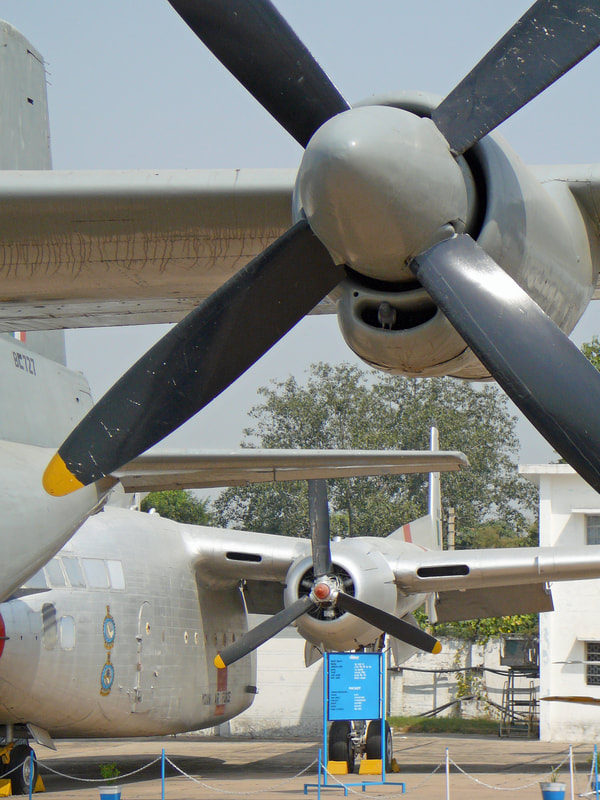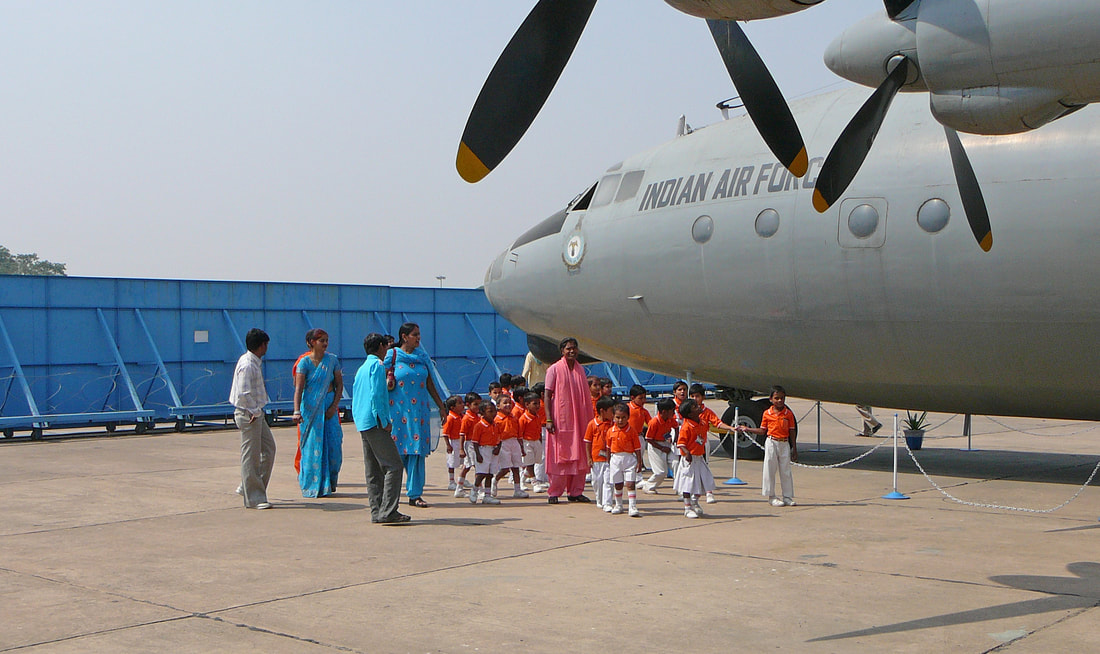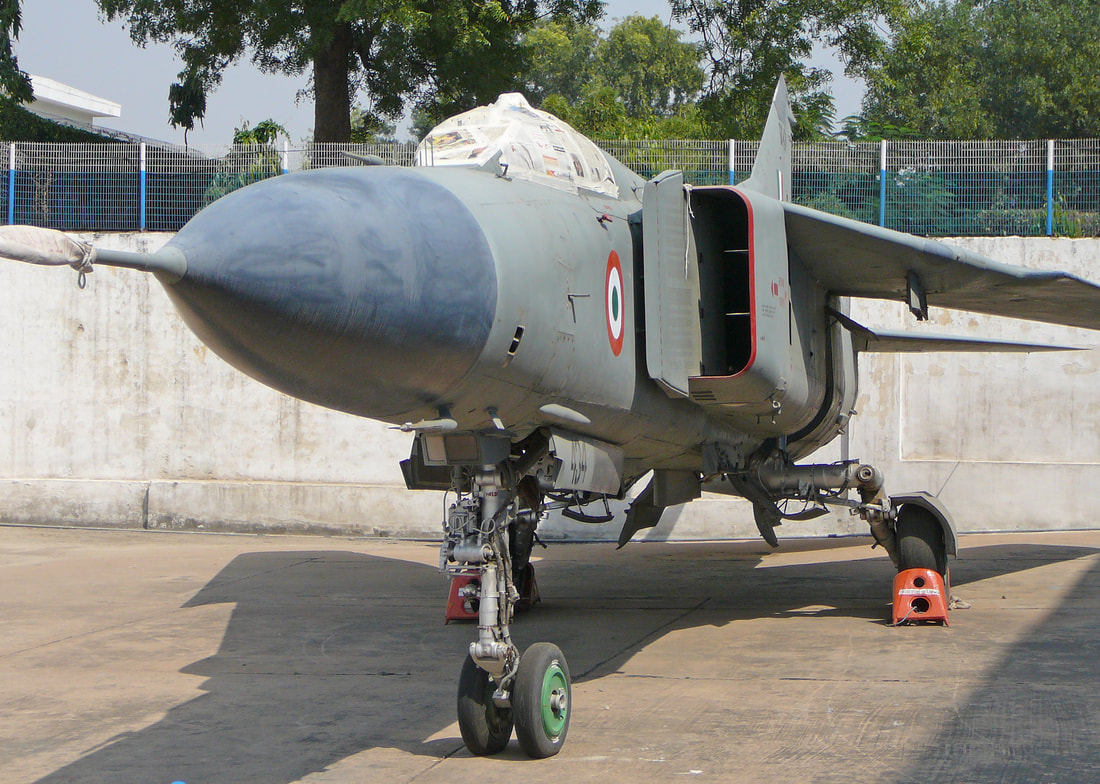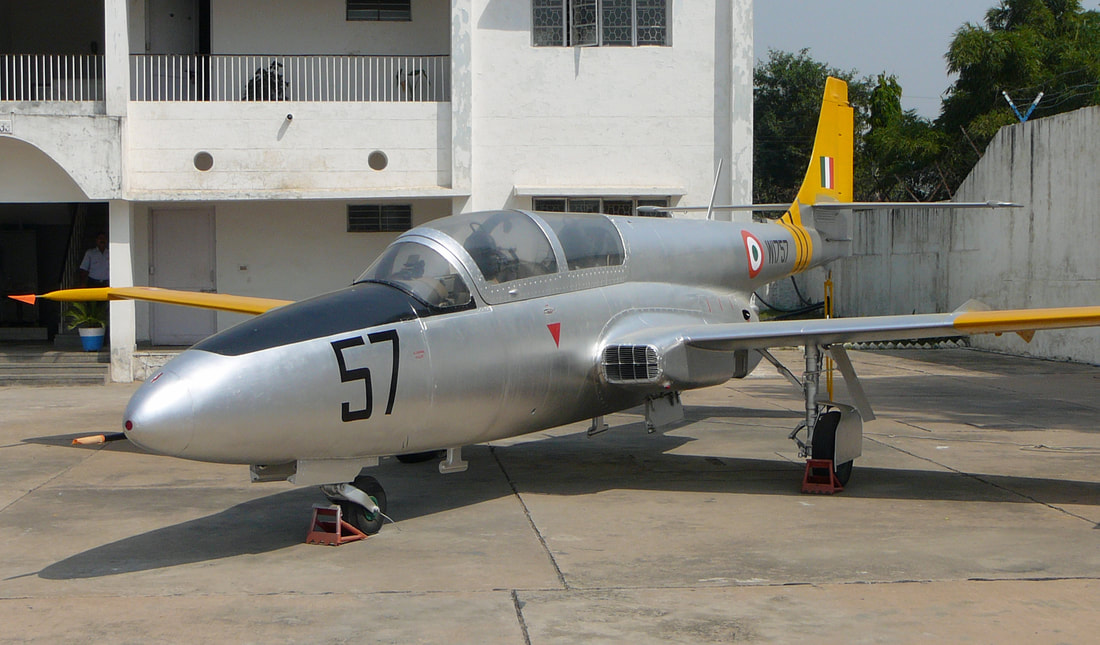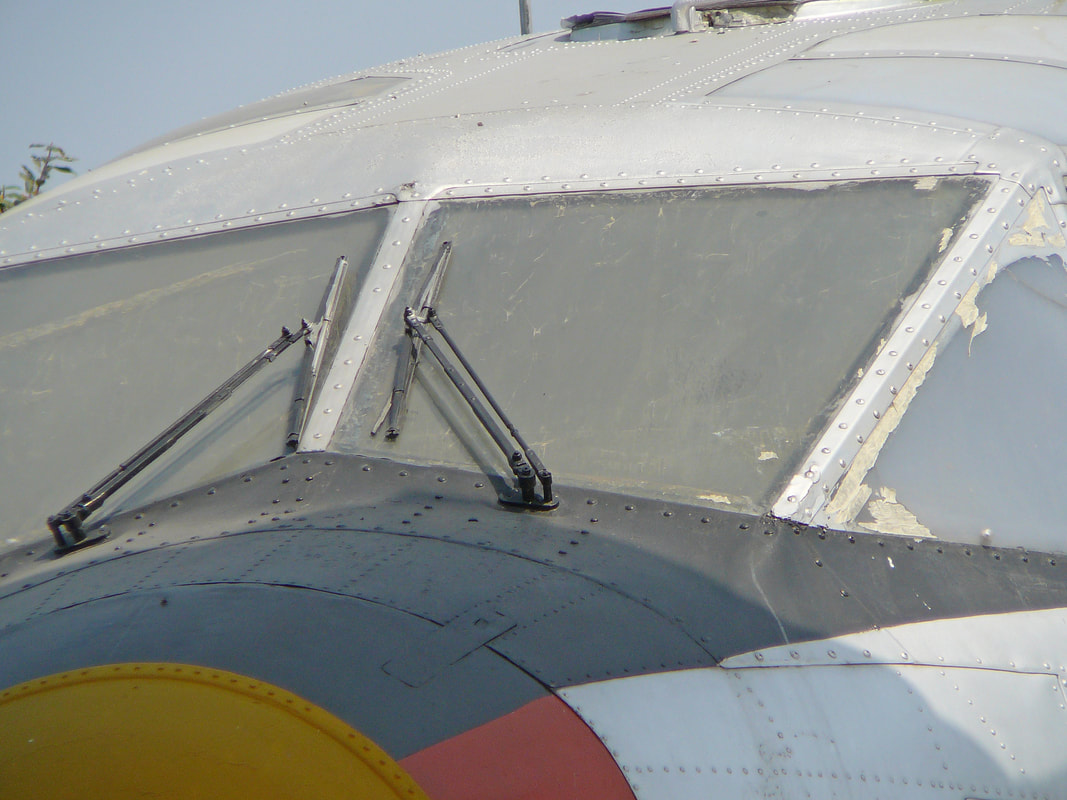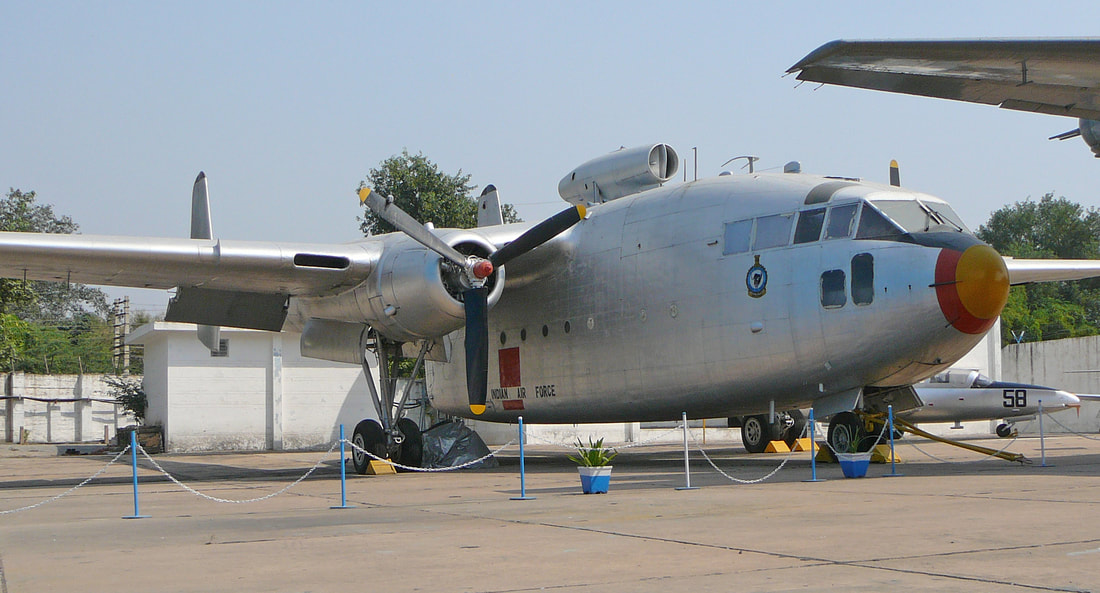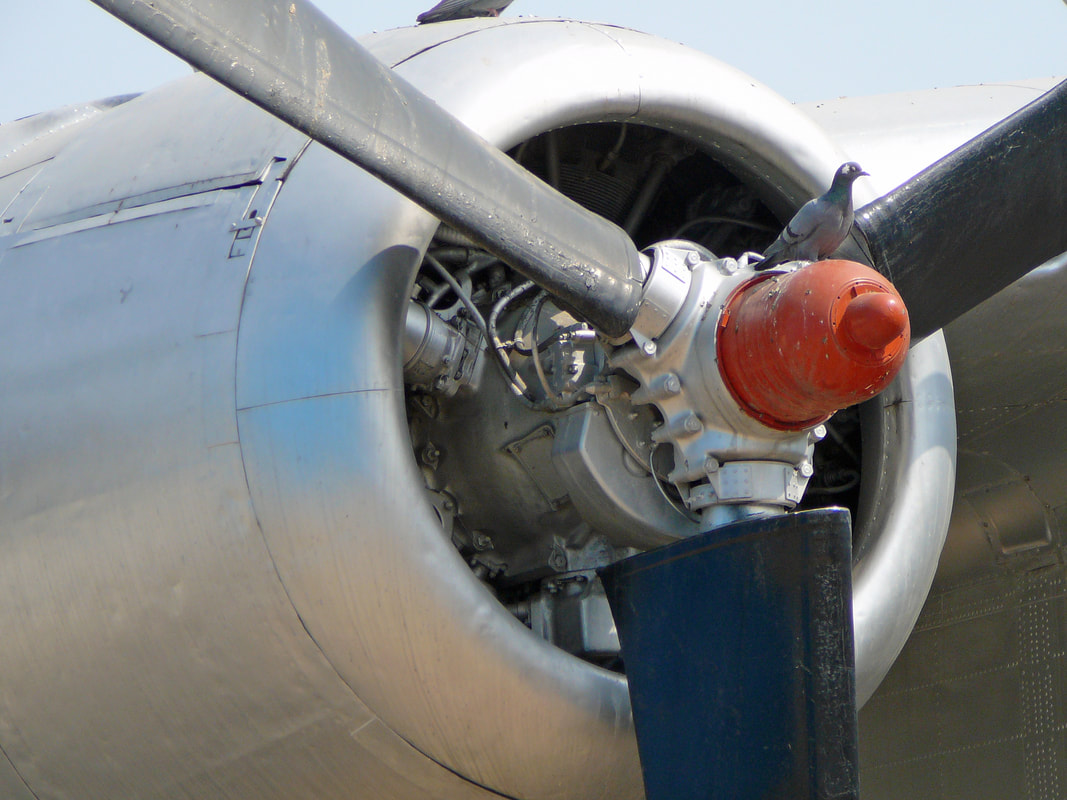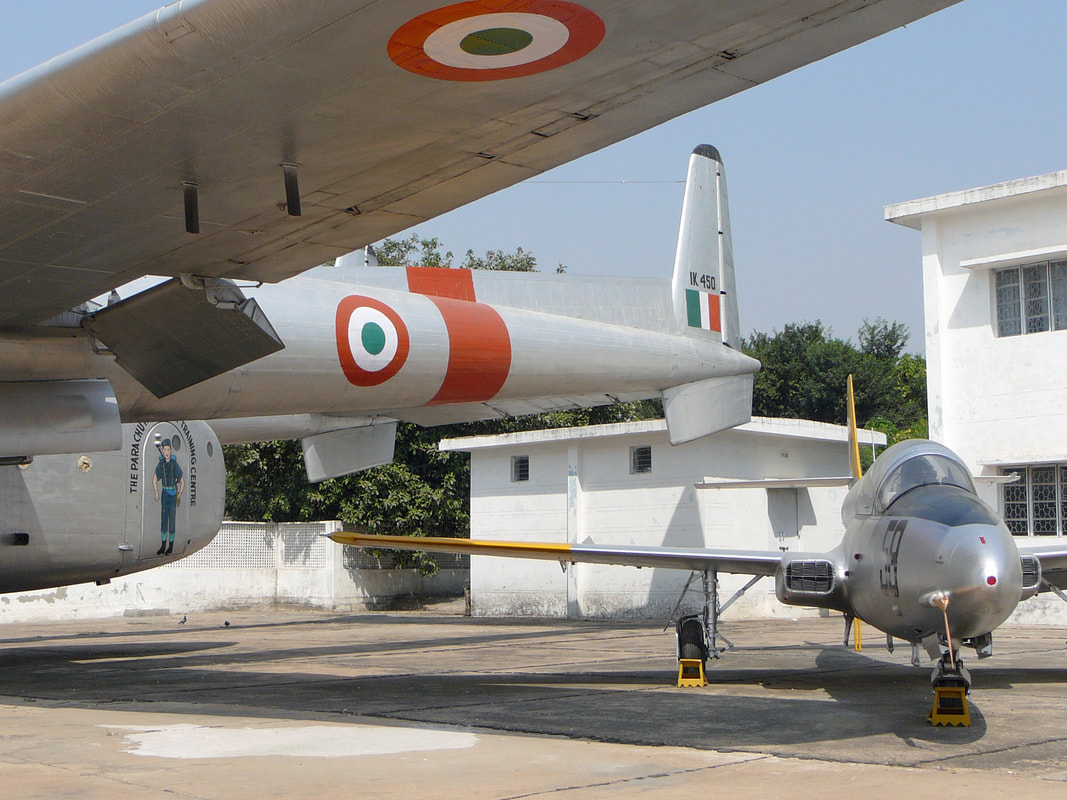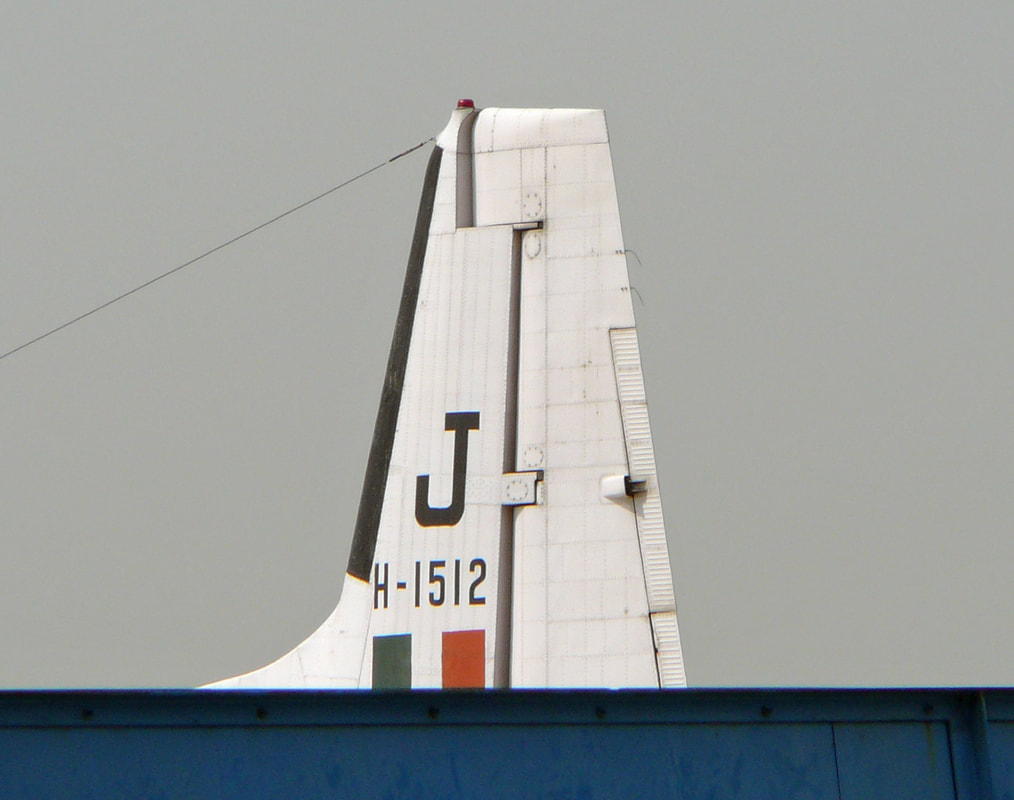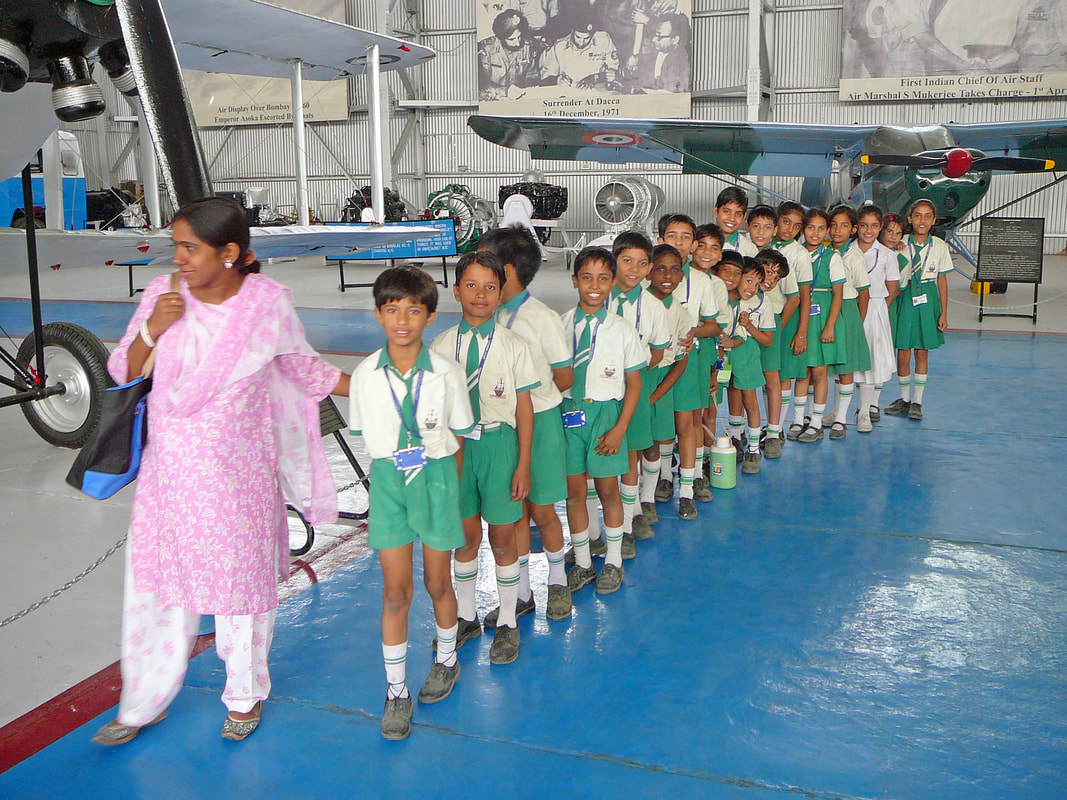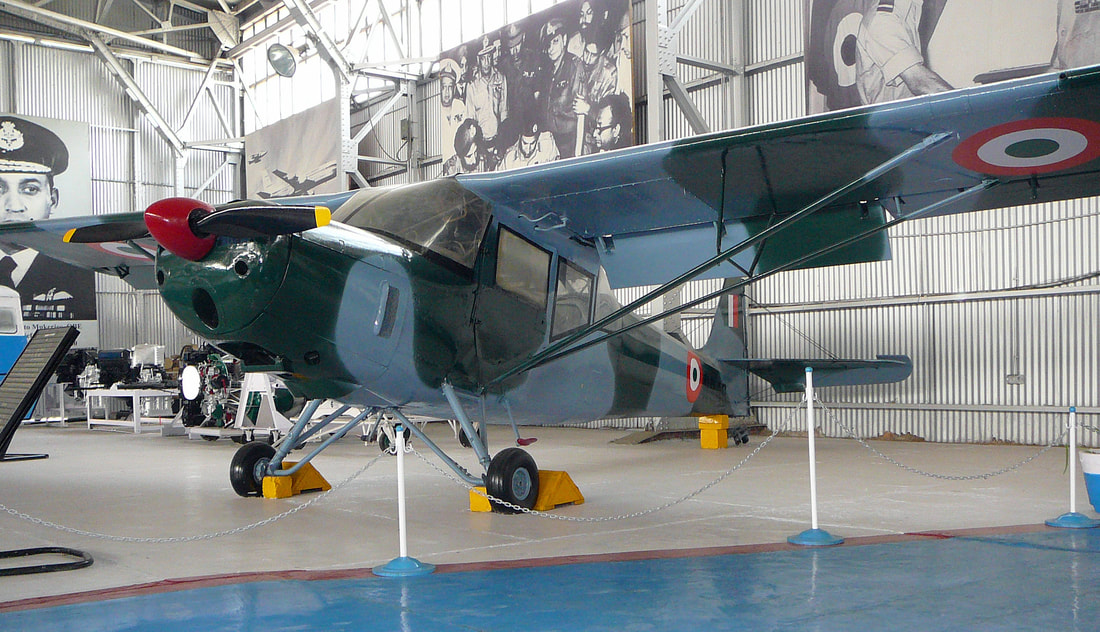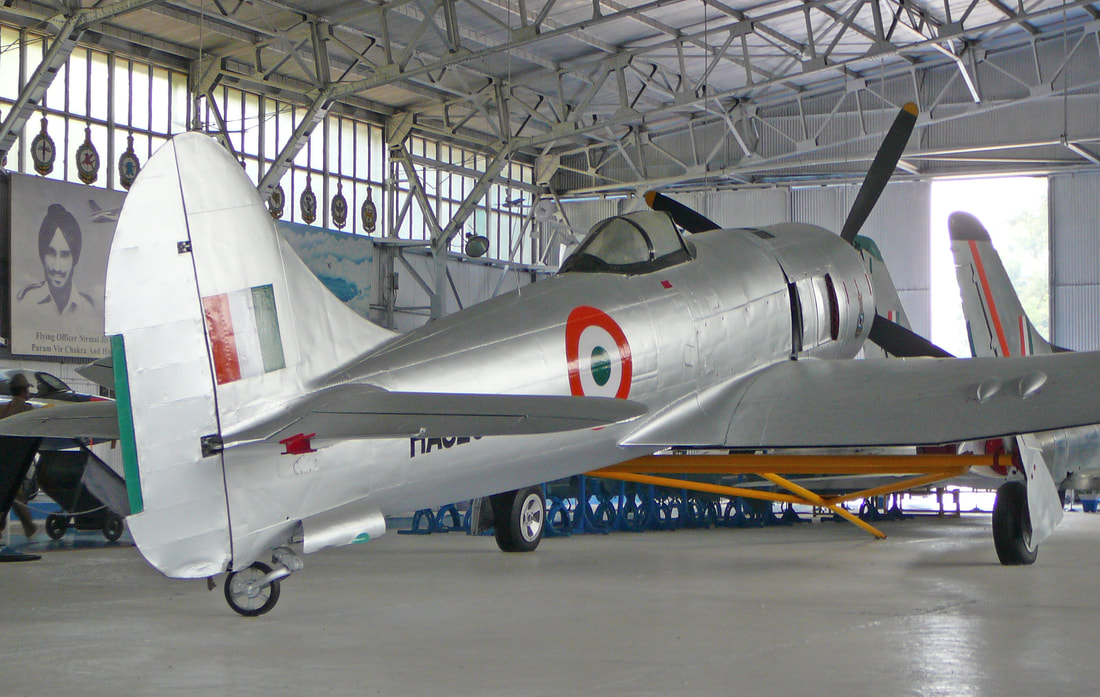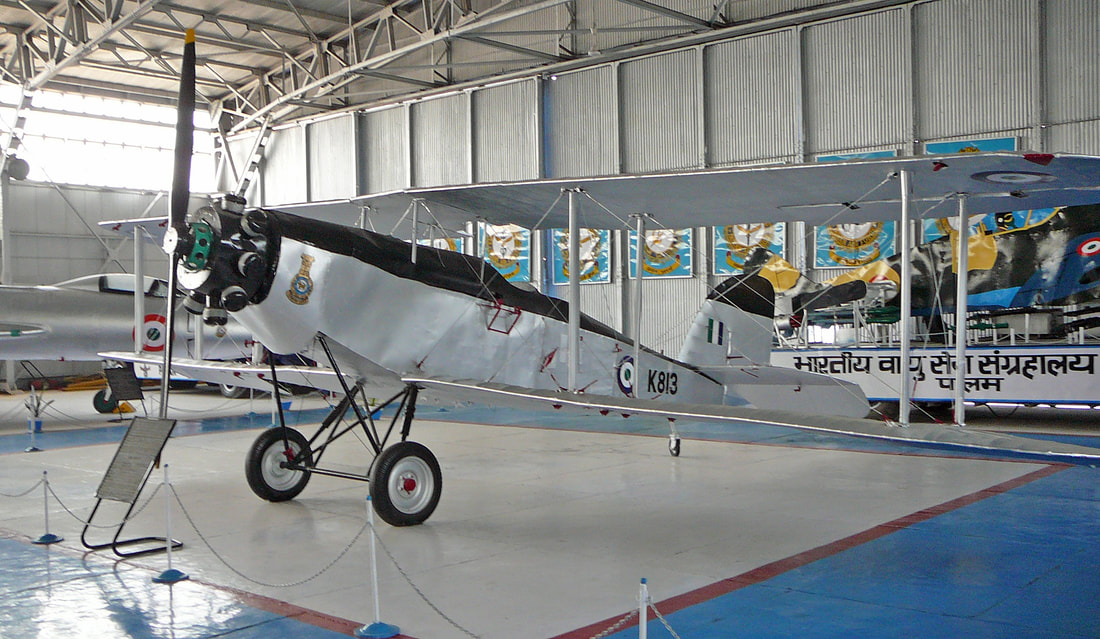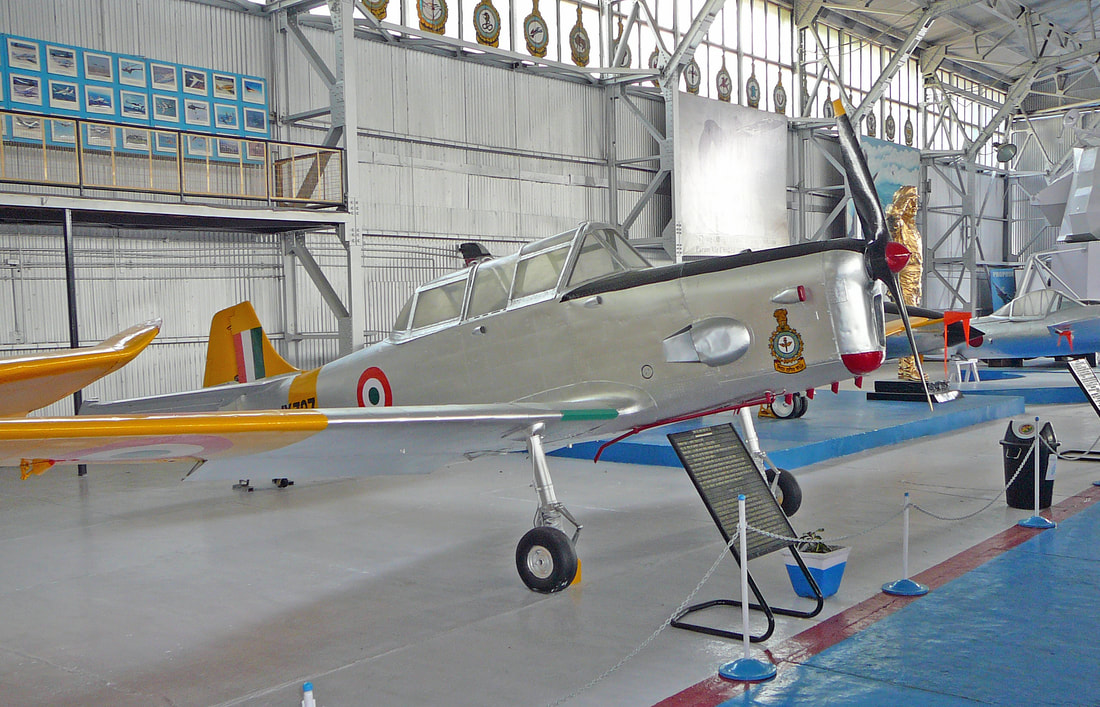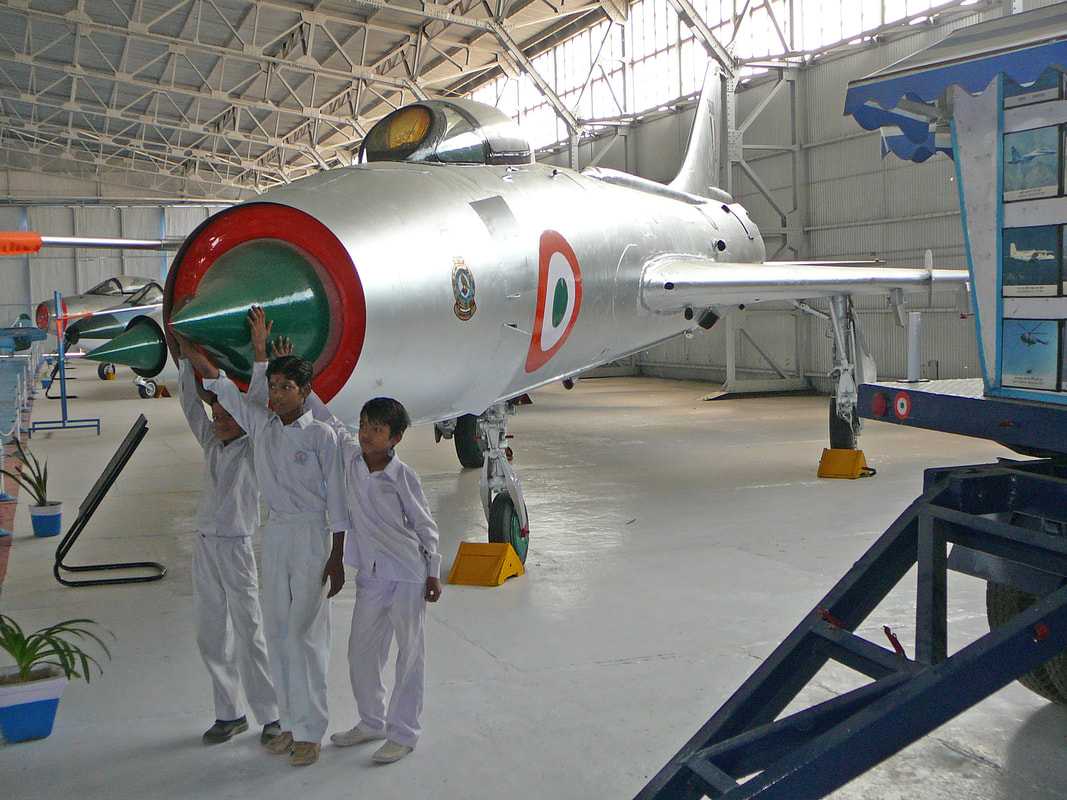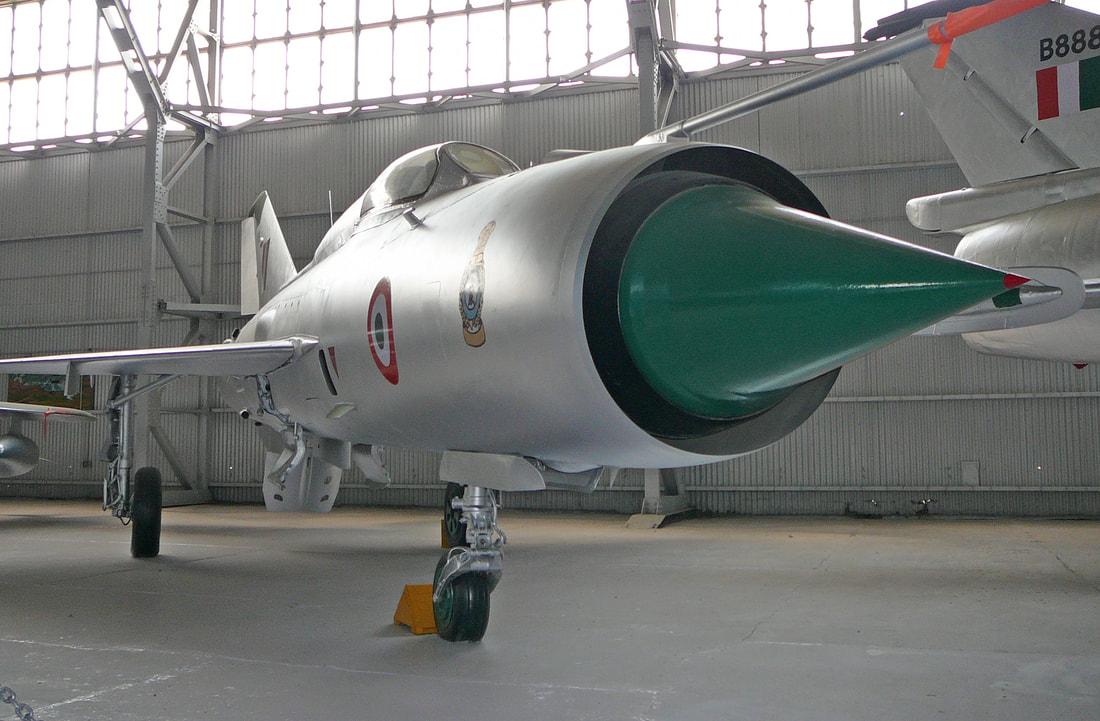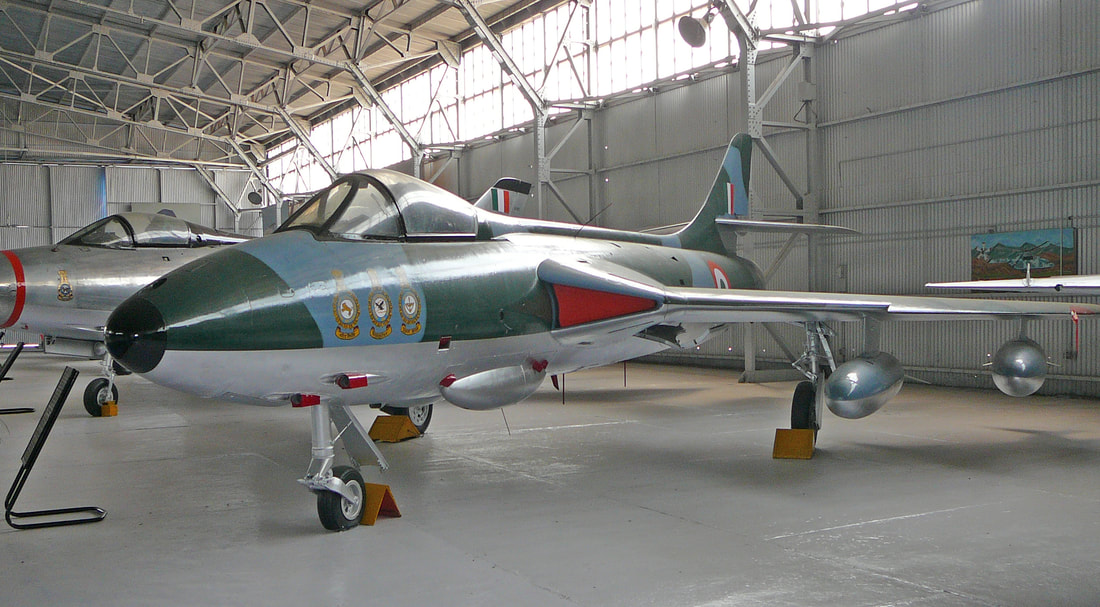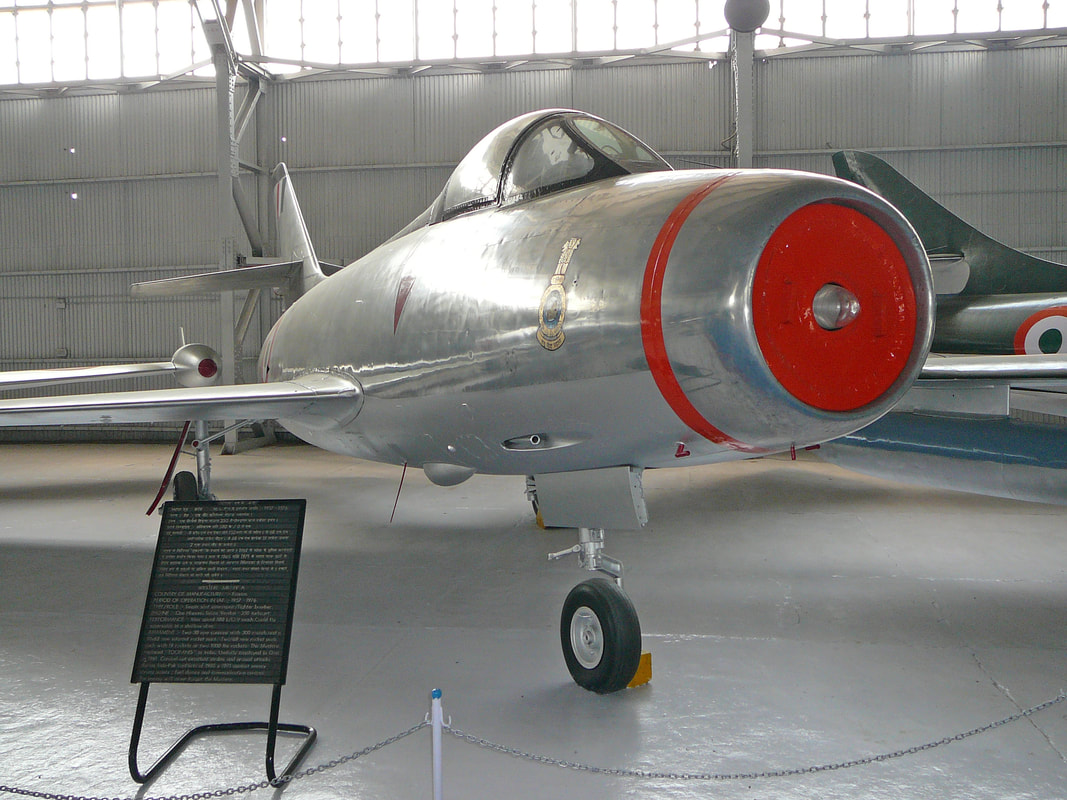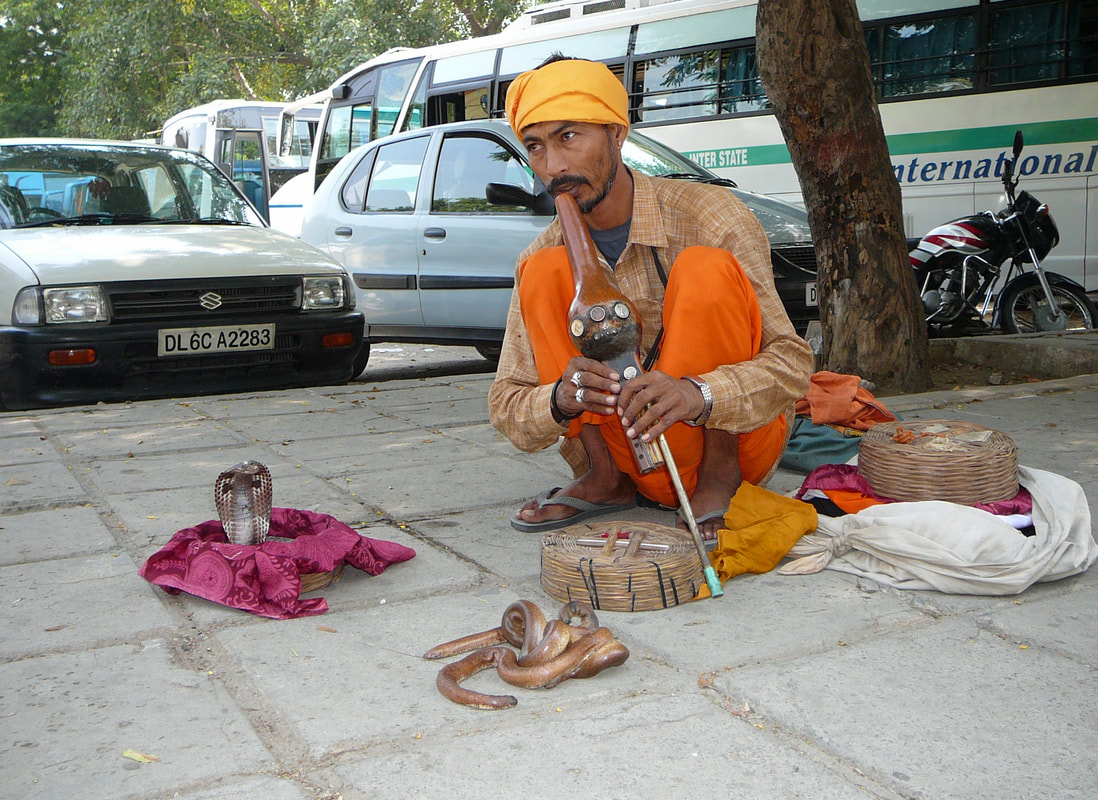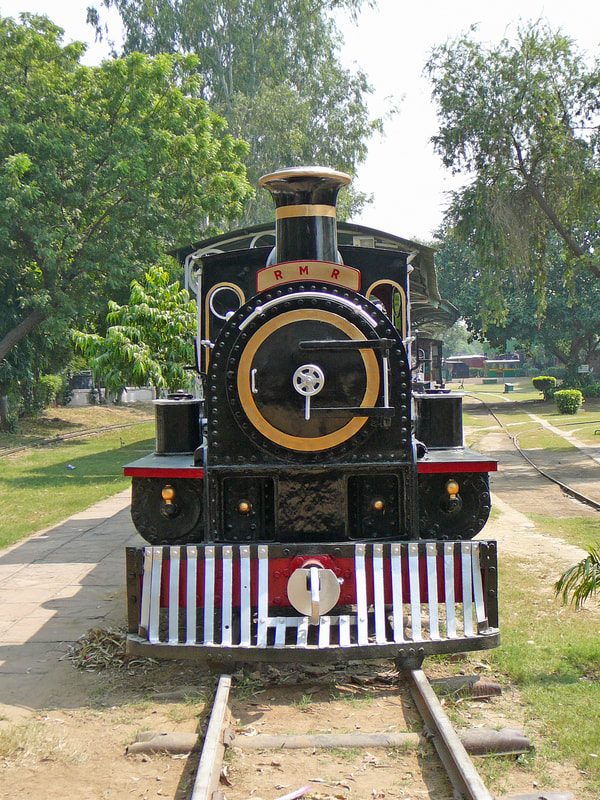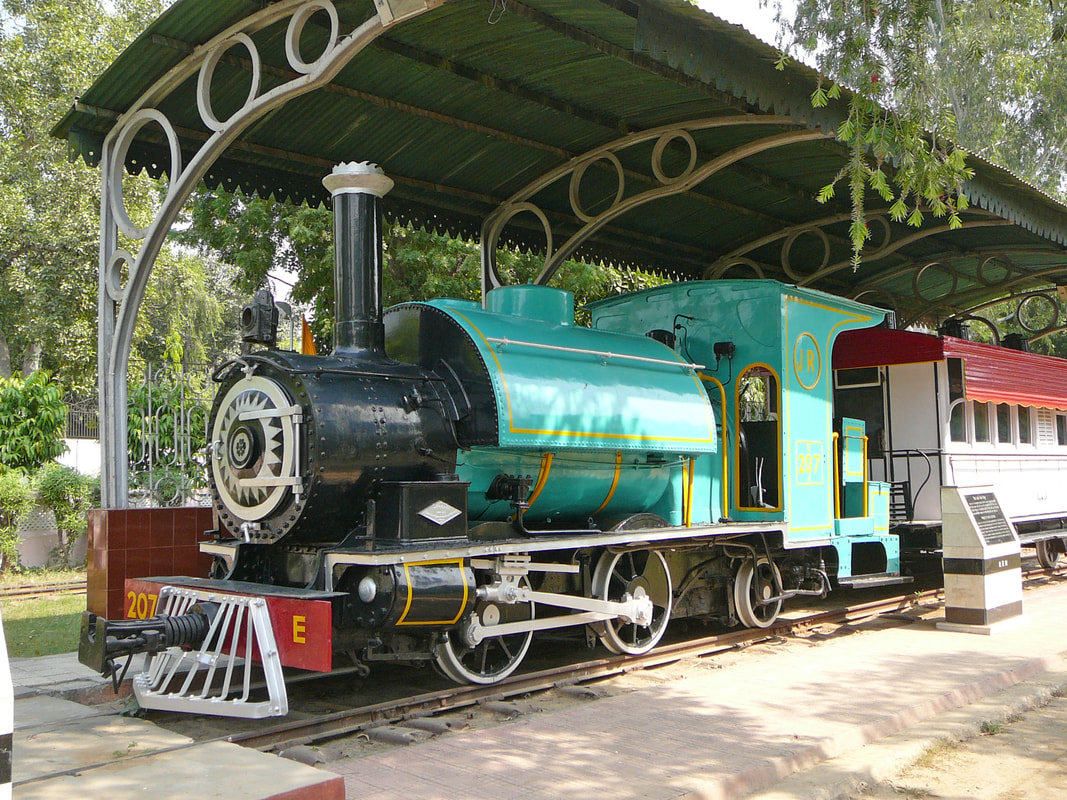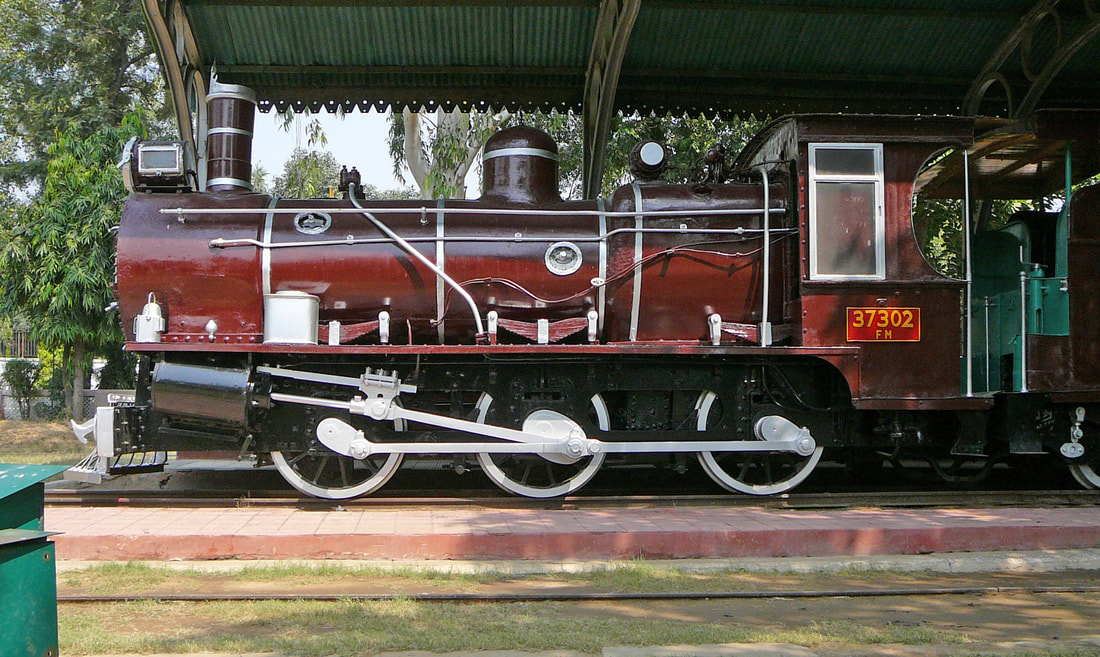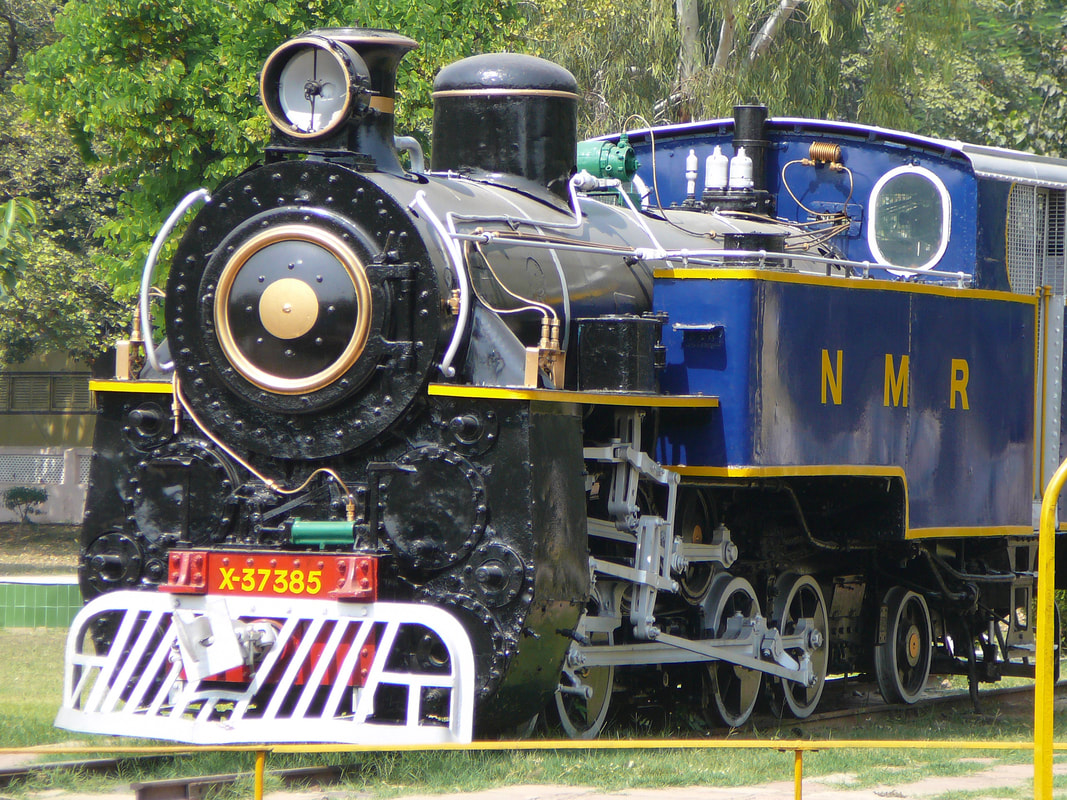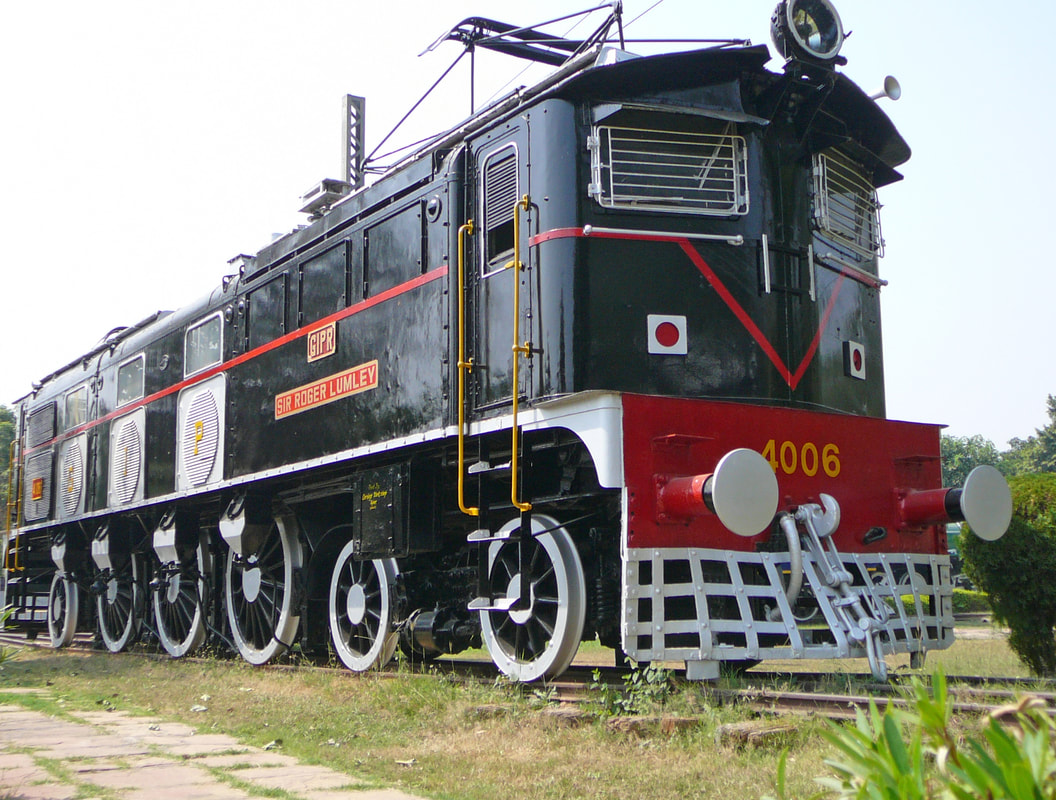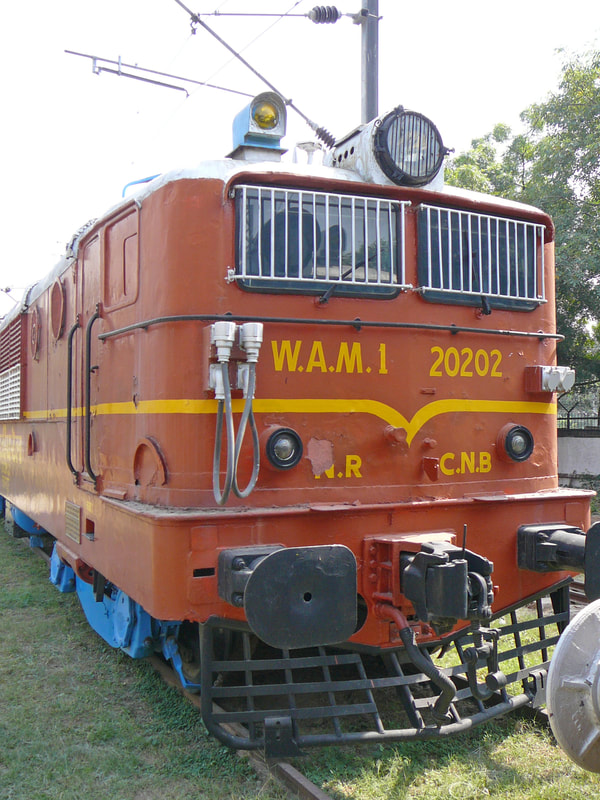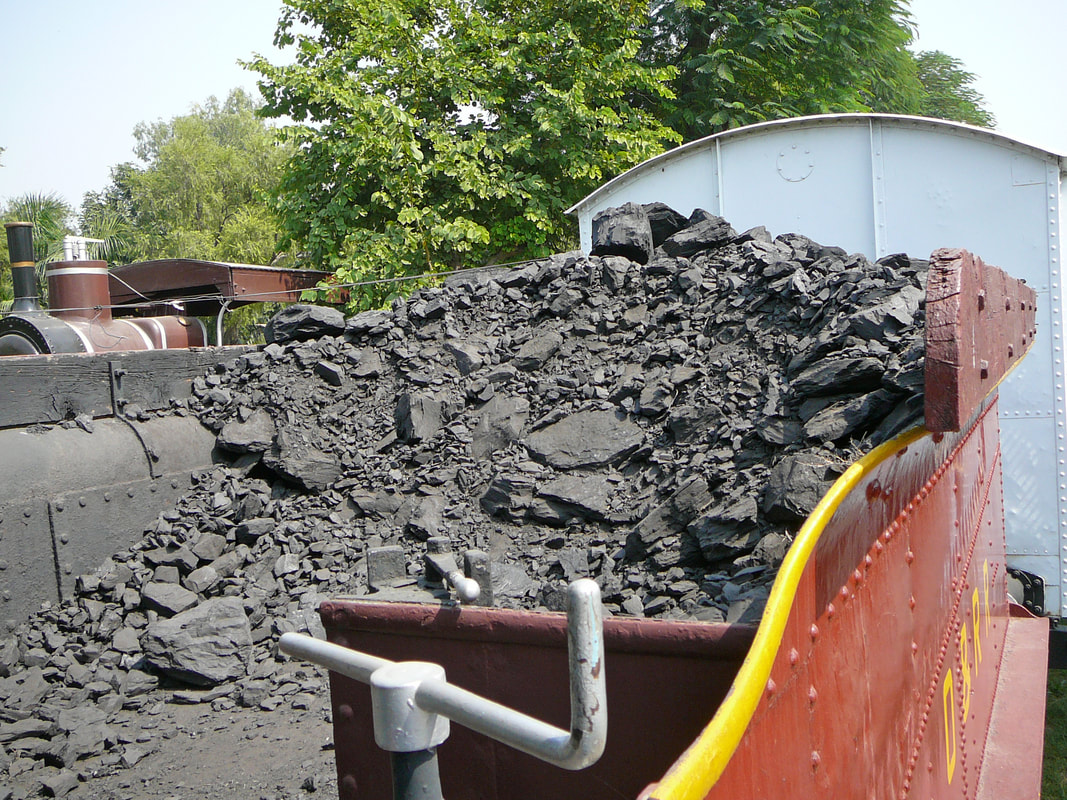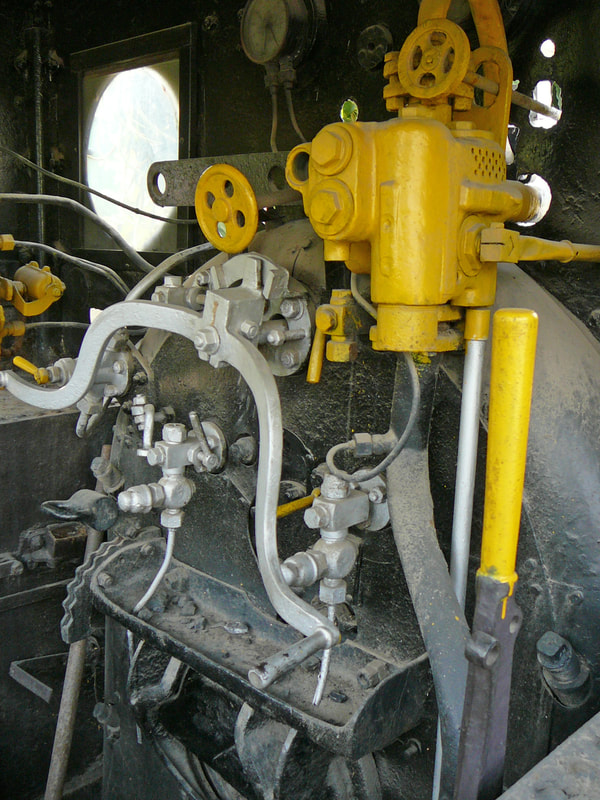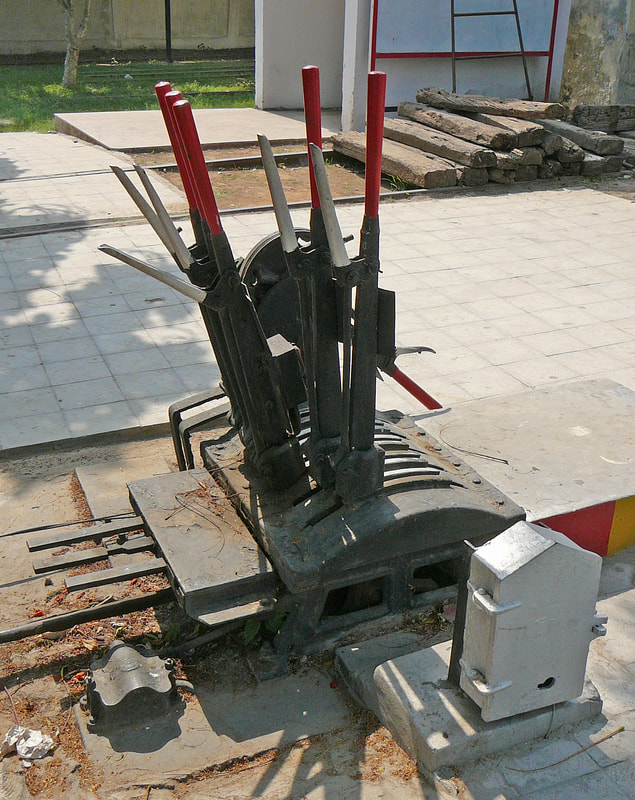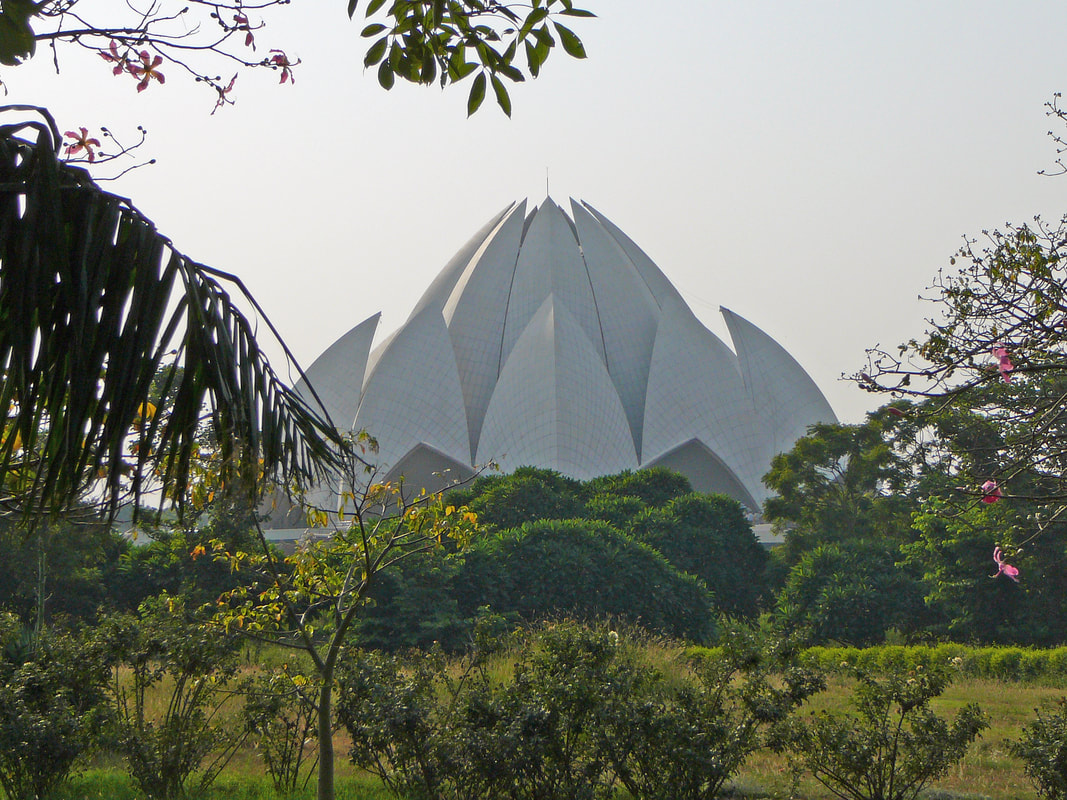Planes & Trains, New Dehli, India
New Dehli Air Force Museum
by Jan Koppen
In October 2007, I had to work at the KLM Cargo office in New Dehli, India. During my spare time, I visited the city's Air Force museum and several other city highlights.
Enjoy the pics and captions.
Enjoy the pics and captions.
'On the road' with the collegeas of our New Dehli office.
After work I went site-seeing with 'my chauffeur' in his old Ambassador (modeled on the British Morris Oxford III series).
The air quality of Delhi drastically deteriorates to hazardous levels during October to December due to various factors including stubble burning, road dust, vehicle pollution and cold weather.
Poverty on the streets of New Delhi.
Traffic jam on the polluted streets of New Delhi, India.
Overview of New Dehli from the Jama Masjid Mosque, with in the background the Red Fort.
Red Fort, New Delhi, India.
The Indian Air Force Museum, Palam, is the museum of the Indian Air Force, and is located at the Palam Air Force Station in Delhi, India. It stores the rich history of IAF.
The museum is situated on the Old Palam Road, 110010 New Dehli.
It was a sticky day with a midday temperature of over 40 degrees centigrade.
Warriors of a by-gone era.
IAF Canberra-58 'IF-907' is on public display at the IAF Museum of New Delhi.
Even 'my chauffeur' seemed to be interested in the Canberra.
IAF Sikorsky S-55 '12590'.
Exhibited at the IAF Museum at Palam, beside the Indian Air Force base at Delhi, is this IAF Sikorsky S-55 'IZI590'. This particular Helicopter joined the Indian Air Force fleet in April 1957. These were the earliest helicopter types acquired by the IAF between 1954 and 1957.
Wing portion of a Pakistan Air Force's Sabre aircraft which was shot down by an Indian Air Force aircraft during the 1971 Indo-Pak war now preserved in the War Trophy section area of the IAF Museum, New Delhi.
The biggest attraction of the museum! - The Liberator. This long range bomber was extensively used in the Pacific war theater against Japan during World War II. Indian Air Force used it extensively the liberation of Goa in 1955.
Bare metal Liberator caught by the camera on a busy sun-drenched day at New Dehli.
'KP355' is a MiG-25R and is seen here accompanied by a MiG-23 and two Iskra's.
It seems there are no 'chroom-6' issues in India.
The Dutch Ministry of Health and Welfare should have said; - "Absolutely no danger to public health, whatsoever".
The MiG-25 was kept a guarded secret in India. It was used extensively in the Kargil War and Operation Parakram, conducting aerial reconnaissance sorties over Pakistan. In May 1997, an Indian Air Force Mikoyan MiG-25RB reconnaissance aircraft created a furor when the pilot flew faster than Mach 2 over Pakistani territory following a reconnaissance mission into Pakistan airspace.The MiG-25 broke the sound barrier while flying at an altitude of around 65,000 feet (20,000 m), otherwise the mission would have remained covert, at least to the general public. The Pakistan Government considered the breaking of the sound barrier was deliberate to make the point that the Pakistan Air Force (PAF) had no aircraft in its inventory which can come close to the MiG-25's cruising altitude (up to 74,000 feet (23,000 m). India denied the incident but Pakistan's Foreign Minister, Gohar Ayub Khan, believed that the Foxbat photographed strategic installations near the capital, Islamabad. Lack of spare parts and India's acquiring of unmanned aerial vehicles and satellite imagery eventually led to its retirement in 2006.
MiG-25 of the Indian Airforce on display at the Indian Airforce Museum in Palam. This beautiful fighter was mainly used for photo recce missions.
IAF Antonov An-12A 'BL 727'.
Seven An-12s were still serving in the early 1990s when it was decided to put them up for sale. 'BL727' was retained for preservation at Palam.
A close-up of the gun turret fitted onto the IAF An-12A. This aircraft was retired from active service many years ago and can be seen at the IAF Museum in New Delhi.
MiG-23BN 'SK 434'. The MiG-23BN ground attack aircraft was phased out by the IAF on March 06, 2009 and the MiG-23MF air defence interceptor was phased out in 2007. A total of 40 MiG-23MF, 95 MiG-23BN and had been obtained by the IAF.
The Mig-23 is a swing-wing single seater figher-bomber. Maximum speed - 1.7 Mach.
PZL TS-11 Iskra 'W1757'.
'57' on display at the Air force Museum, Delhi. This is the second Iskra in IAF to bear the same registration (W1757). IAF returned ten Iskras to the manufacturer, once they reached the maximum operational hours. The manufacturer returned ten Iskras with the same registrations as the returned aircraft.
A Polish-made TS-11 Iskra far away from my home country. This airframe is preserved together with another TS-11 (reg. W1757) in the Indian Air Force Museum.
The Iskras were introduced to replace the Vampires. IAF bought 50 Iskras, which were used as Advance Fighter Trainers.
Fairchild C-119 Boxcar 'IK 450'.
About 40 Flying Boxcars remained in service with the Indian AF till the early 80's. This one, with an Hindustan-built BS Orpheus jet booster pod for better performance at high-altitude locations, was ex USAF 53-4646. Both Iskra's displayed are visible at the right
The C-119 'Packet' was introduced into the IAF as a medium sized transport aircraft to supplement the C-47 Dakota. These brute looking aircraft were in use till 1986. Maximum speed - 476 km/hr and maximum range - 3218 km.
Originally built as 53-4646 for the USAF. She served with the IAF from 1953 to 1966.
This brightly colored Boxcar is preserved at the Indian Air Force Museum at IAF's technical area at Delhi Airport.
C-119 Packet with a dorsal Jet pod.
Massive Pratt & Whitney R-4360-20 were powering the C-119.
Mid-day sunshine glints off the polished aluminum nose section of this Iskra.
A HAL Krishak (N949) in Indian Army color scheme. The Krishak was an air observer aircraft and was adopted into service in 1965.
IAF Hawker Tempest Mk.II 'HA623'. Very few examples are now left in the world for public display.
IAF HAL-24 Marut 'D-1205'. This Marut aircraft was believed to be in airworthy condition at the time when it was inducted in the museum. This is one of the finest maintained Marut on Indian soil.
This stunning photograph help capture the essence of the lost age of the turbojet fighters.
'K813' is a Westland Wapit Mk.IIA.
The Wesland Wapit is a two seater multirole plane with maximum speed of 225kmph, range of 580kms. It contains one 550 HP Bristo Jupiter piston engine and the armament capable for it was; one fixed Vickers machine gun on port side and one Lewis machine gun.
A great piece of history preserved inside the museum. Indian Air Force received 20 Percival built plus 42 built under licence by Hindustan Aircraft Limited.
The Hindustan HT-2 is an Indian two-seat primary trainer designed and built by Hindustan Aeronautics Limited. The HT-2 was the first company design to enter production in 1953 for the Indian Air Force and Navy, where it replaced the de Havilland Tiger Moth. The HT-2 is a low-wing cantilever monoplane with a fixed tailwheel landing gear. Powered by a 155 hp (116 kW) Cirrus Major III piston engine, the aircraft has enclosed tandem cockpits with dual controls. Apart from military use, the aircraft was also used by Indian flying schools.
E2016 is a HAL built Gnat II Ajeet of Ex. No. 2 Sqn.
IAF DH. Vampire 'ID 606' was a night fighter in the IAF's inventory.
Military operations took place in Ladakh in 1948 during the conflict in Jammu and Kashmir between the Indian Army and Pakistani raiders infiltrated to capture the kingdom of Jammu and Kashmir. The eviction of this invading force of tribal raiders, who enjoyed numerical superiority, better lines of communication, commanding high ground and superior logistics, was a major military achievement for the small force of Indian soldiers.
IAF Marcel Daussault MD.450 Ouragan 'IC554'. Commonly termed as "Toofani" of the Indian Air Force. This particular aircraft was among the first four aircraft inducted into the 8 Squadron of IAF along with IC553, IC555 and IC556.
IAF Sukhoi-7BMK 'B888'. The first Sukhoi Su-7 aircraft arrived in crates by ship at Bombay. These were assembled at Santa Cruz and delivered to 26 Squadron which became the first squadron of Indian Air Force to operate the new type in March 1968.
IAF 'C499' is a very will maintained MiG21FL.
IAF MiG-21FL 'C499'. A very neat and clean jet fighter, a perfect example of good maintenance.
IAF Hawker Hunter F.56 'BA263' resting inside the IAF Museum of New Delhi.
India arranged for Hunters to be purchased in 1954 as a part of a wider arms deal with Britain, placing an order for 140 Hunter single-seat fighters; simultaneous to an announcement by Pakistan of its own purchase of several North American Sabre's.
IAF Marcel Dassault MD.452 Mystère IVA 'IA1334'. This properly maintained Mystere bears the symbol of No.31 Squadron on its nose depicting its service information with IAF. Mysteres carried out excellent ground attacks during the 1971 Indo-Pak war.
This seems also a way to make a living!
The National Rail Museum in Chanakyapuri, New Delhi, displays exhibits on the history of rail transport in India. The museum was inaugurated on 1 February 1977, and spans over 10 acres (40,000 m2). In addition to its vast galleries, the museum features simulations of coaches, diesel, electric and steam engines.
Pfff... with a midday temperature of 40 degrees centigrade I went train spotting!
|
Steam locomotive 'F-734'. Built by the Ajmer shops of Rajputana Malwa Railway in 1895 this locomotive was the first locomotive to be fully manufacturd in the country. Weighting 38 tons this locomotive with inside connecting rods and outside side rods was used on Rajputana Malwa & Bombay Baroda & Central India Railways. National Railway Museum New Delhi, October 10, 2007.
|
RMR stands for Rajputana Malwa Railway.
Rajputana Railway class E 207 built by Duds & Company in Glasgow in the late 1890's.
'37302 FM' was build in 1888 by Dubbs & Co. in Glasgow and she was in service with SMR (Southern Mahratta Railway).
This stunning photograph help capture the essence of the lost age of the early Indian Railway locomotives.
In the picture is 'X-37385' of the Nilgiri Mountain Railway. This engine was built by Winterthur Swiss Loco Co., in 1921 and engaged in the South Indian Railway (later Southern Railway) working on all the traffic in the Nilgiri Mountain Railway, a World Heritage Site today which continues to use steam engines.
'X-37385' of the Nilgiri Mountain Railway is a brute looking locomotive.
Found this piece of history at the National Rail Museum of New Delhi on October 10, 2007.
Locomotive WCP1 '4006', named Sir Roger Lumley, was operated by the Great Indian Peninsula Railway.
'WCG1 4502' is named 'Sir Leslie Wilson'.
Railcar No. 899 of Neral Matheran Railway.
Locomotive '31412 HP' was built by Baldwin locomotive works in 1948 and operated by Jodhpur Railway.
This Sharp Steward 3517, has railway number '777' and was built in 1899 at the Sharp Steward & Co. works in Manchester, UK.
A wonderful day at the National Rail Museum, with '18001 WDM/4' of Indian Railways in the center of the show.
The 'WDM-1 17000' was the first mainline diesel locomotive of India.
Caught on camara is the beautiful restored Indian Railways class RD 688 steam locomotive at the national railway museum, New Delhi, india.
W.A.M.1 '20202'. The WAM-1 was a class of Indian railway locomotive made by CLW from 1980. It was India's first AC electric locomotive. All are now retired and one has been preserved at the museum in New Delhi.
Indian Railways WAG1 '20710'.
S.C.R. stands for South Central Railway
Some seriously fascinating stuff there.
Northern Railway 65 ton steam crane No. 2220, Indian Railway Museum, New Delhi, October 10, 2007.
The old-fashion boiler.
Ransomes & Rapier was a major British manufacturer of railway equipment and later cranes, from 1869 to 1987. Originally an offshoot of the major engineering company Ransome's it was based at Waterside Works in Ipswich, Suffolk.
Oudh & Rohilkhand Railway 5 ton hand crane, Indian railway museun, New Delhi, October 10, 2007.
Snagged this photo on October 10, 2007.
Here's another throwback in time photo; - One of the heaviest broad gauge locomotives, XG/M-911 weighed a massive 161 ton and was used on the North Western Railway and later Eastern Punjab Railway for hump-yard shunting. It is infact one of the biggest 'Non-Articulated' locomotive of the Indian Railways i.e. the type of locomotive where the engine units are attached to the main frame and are not separate, independently moving units like in the case of the Garatt.
A peaceful setting for a locomotive.
This locomotive (Y-2/77) was built 1907 by North British for Great Indian Peninsular Railway.
This classic Indian “Mail Engine”, originating from a BESA (British Engineering Standards Association) design of 1906, was built by Vulcan Foundry as locomotive No. 24467 (HPS2 Class 4-6-0), as late as 1950.
A gorgeous looking Sharp Stewart 'B26 0-6-0'.
Steam Locomotive NWR (North Western Railway) ST-707.
Another highlight was a visit to Delhi's distinctive Lotus Temple which belongs to the Baha'í faith.
- The End -







